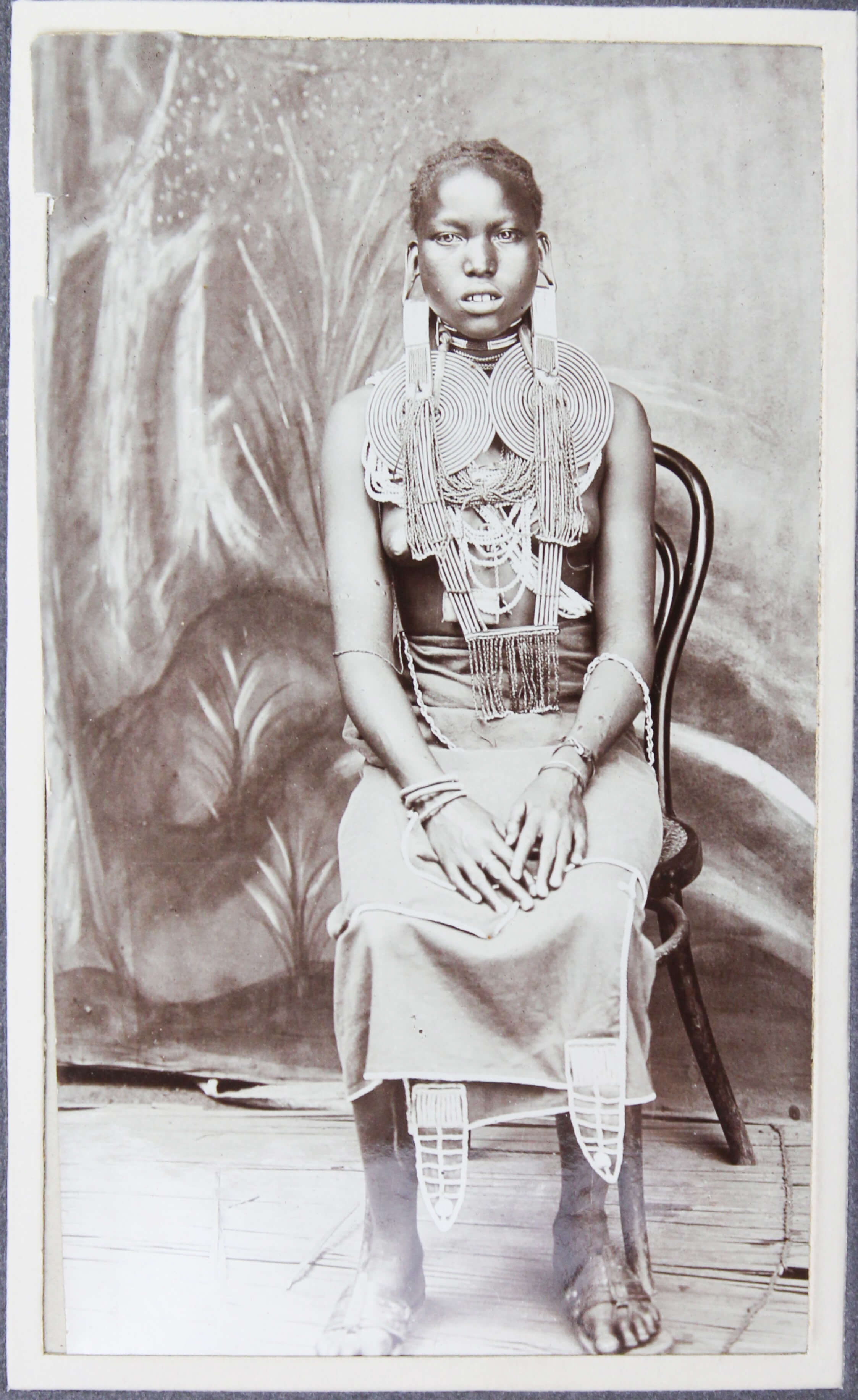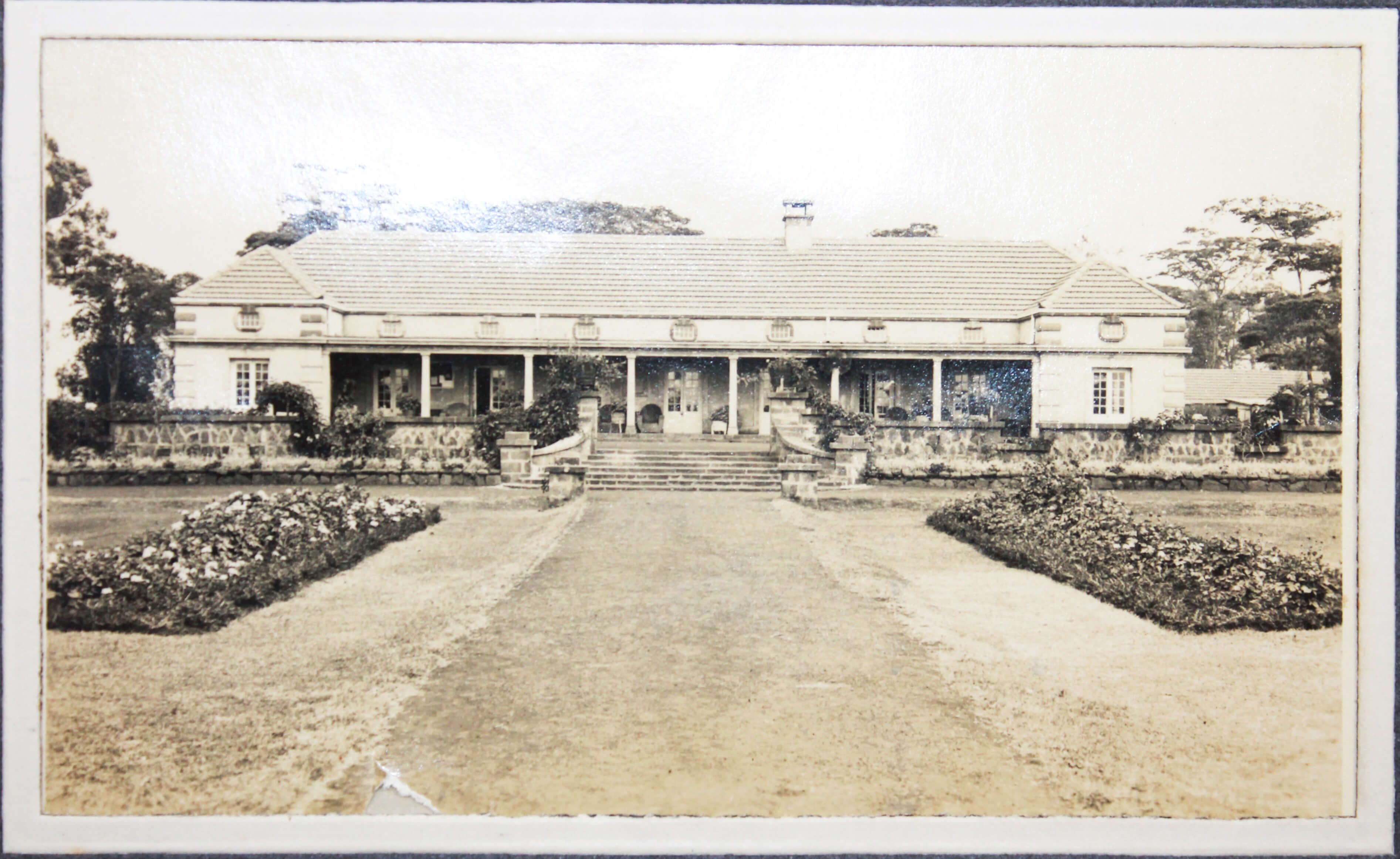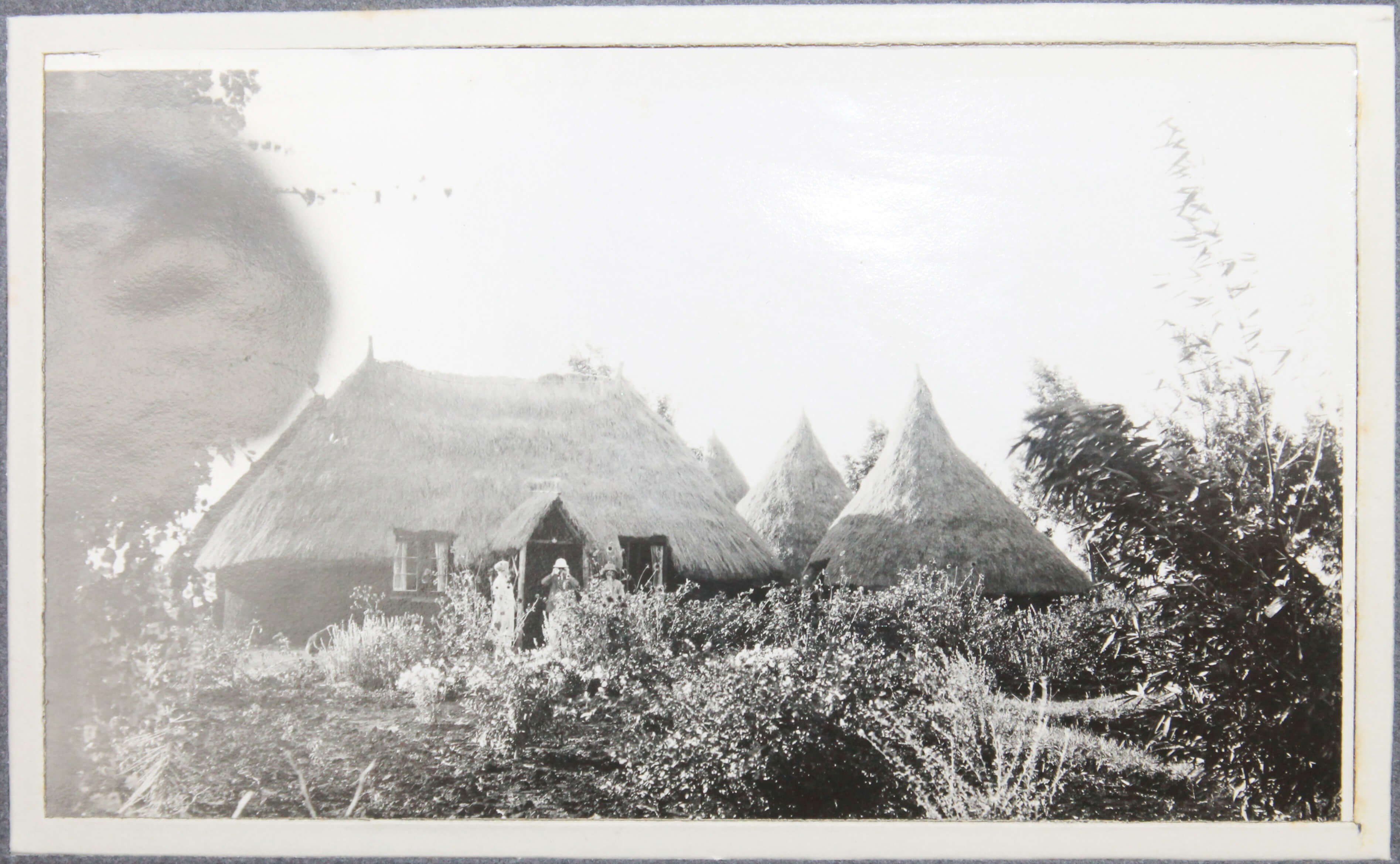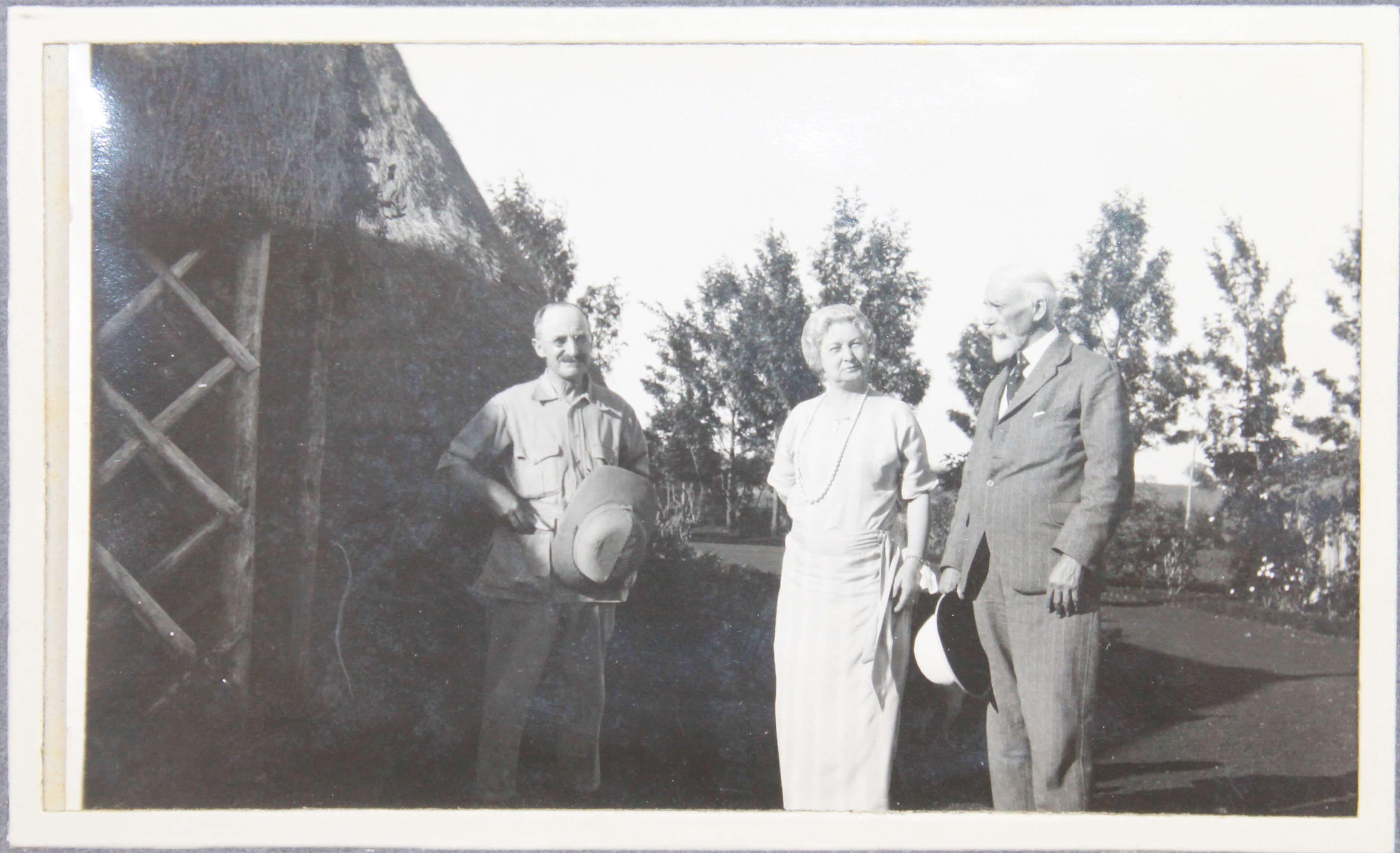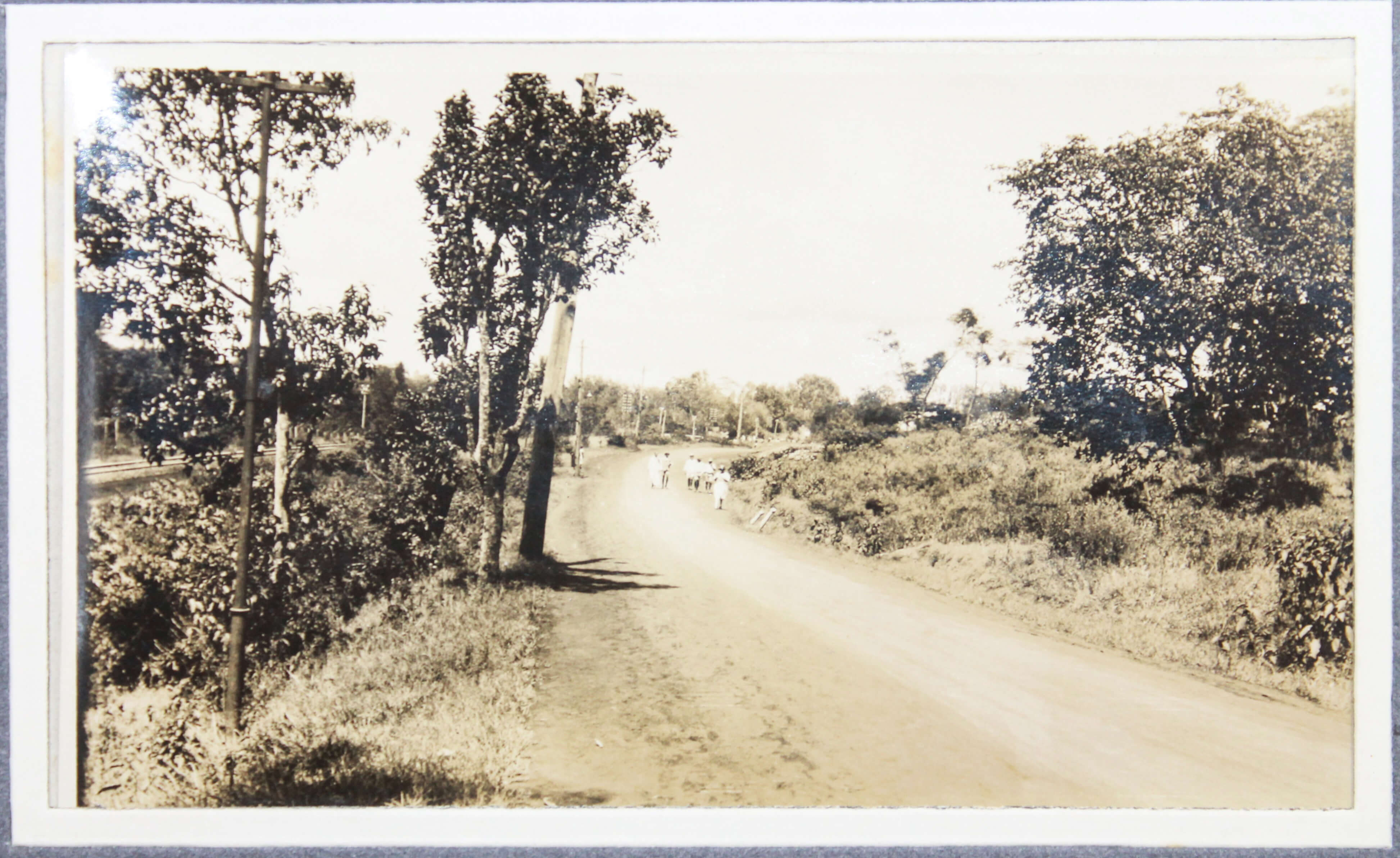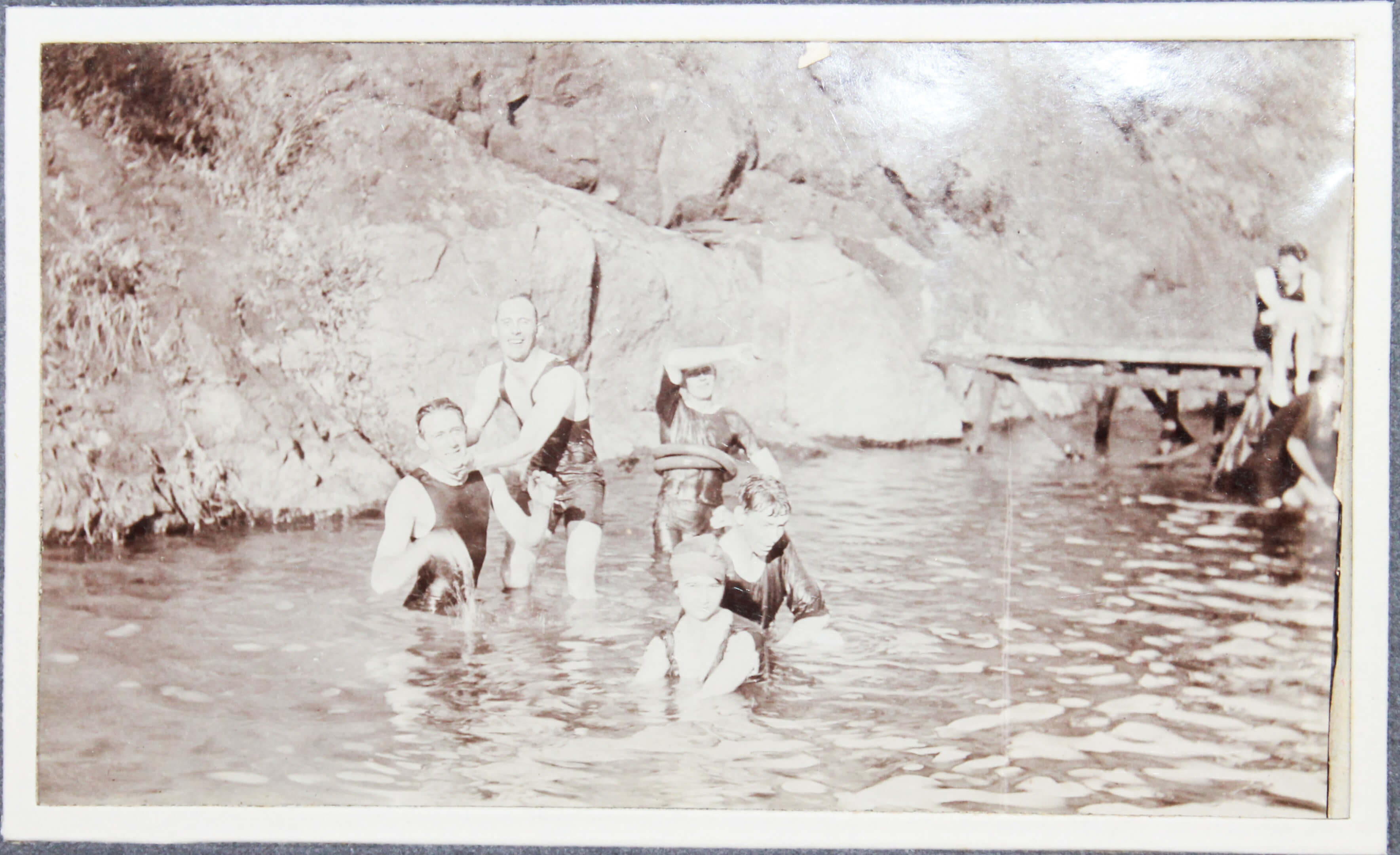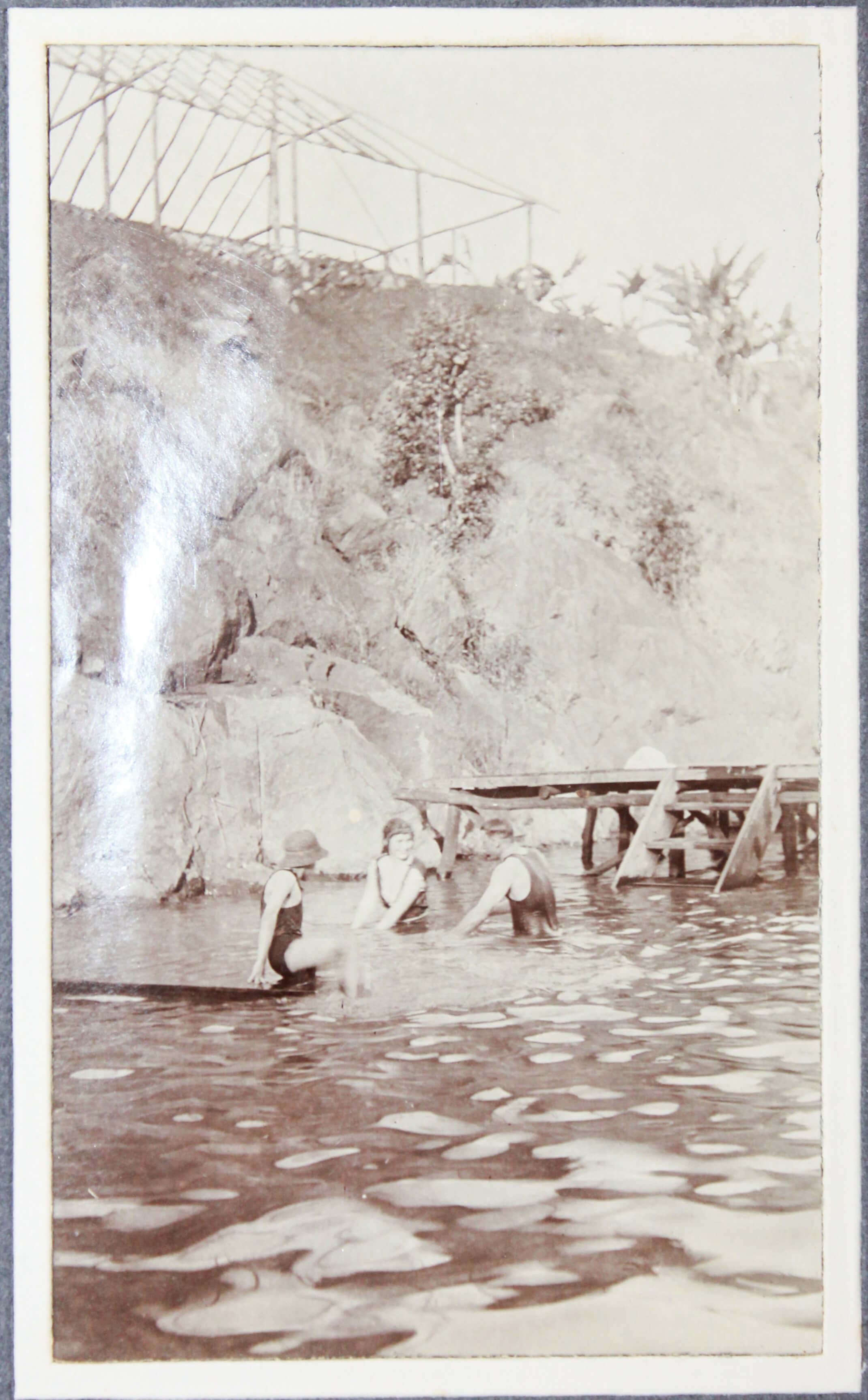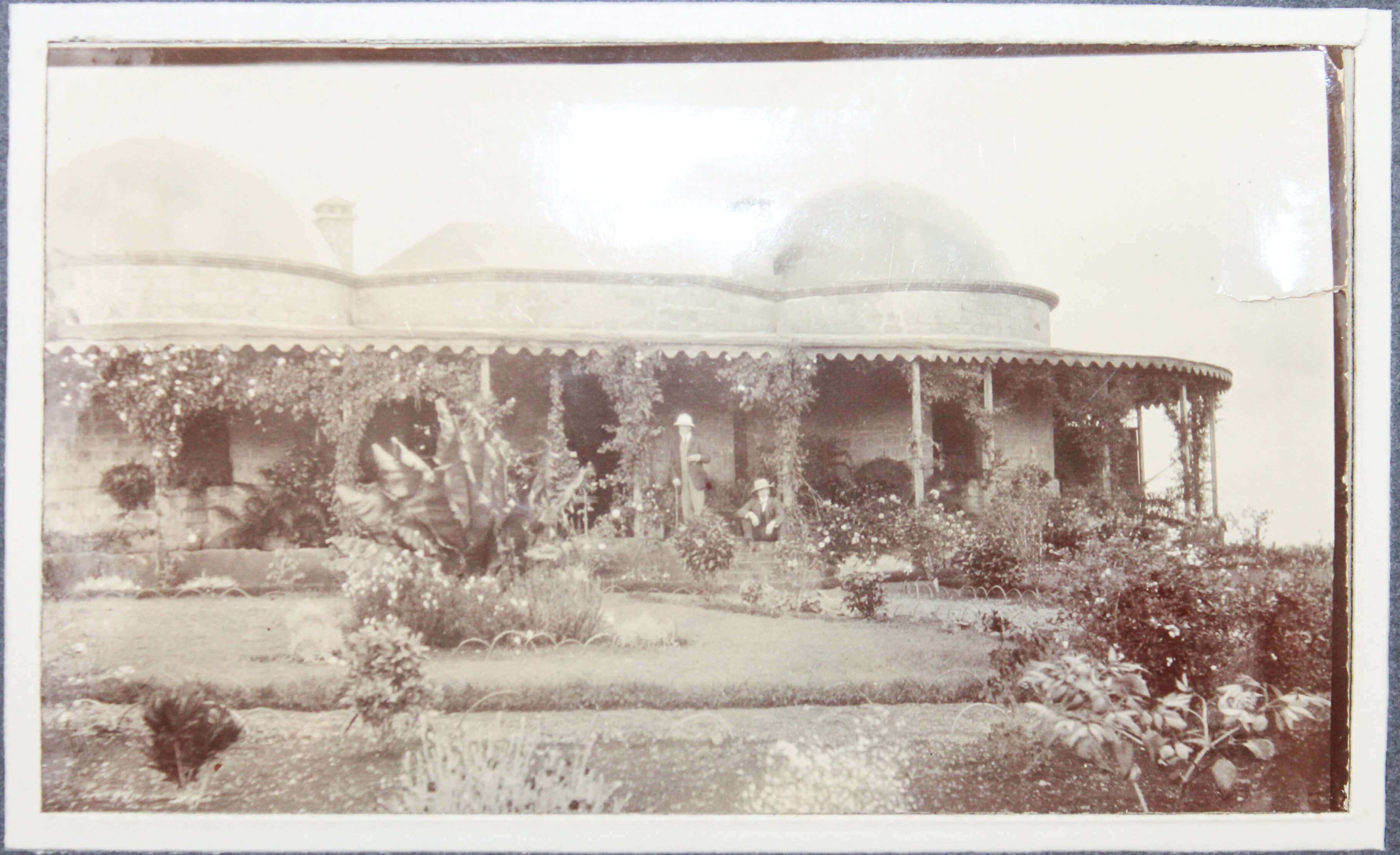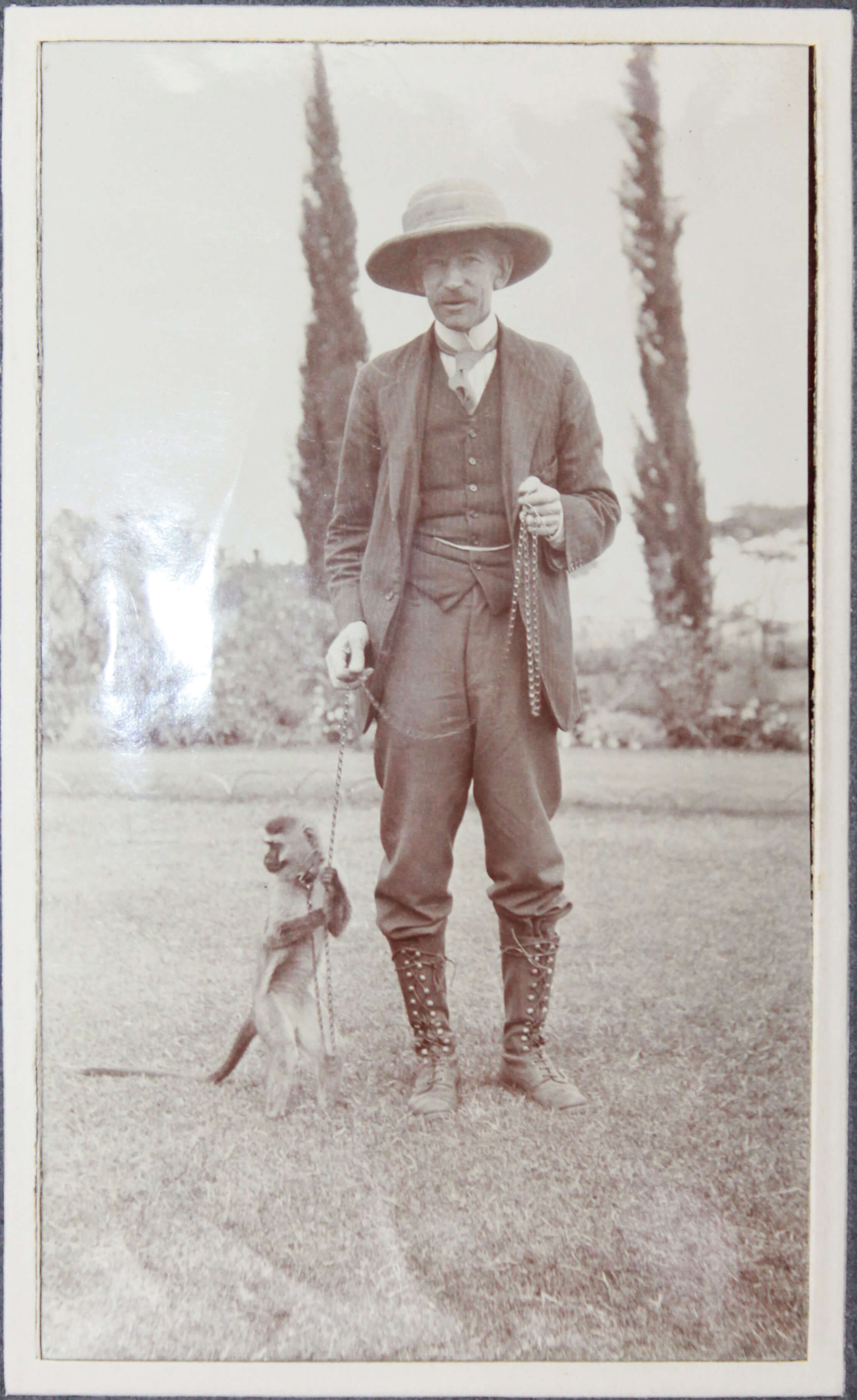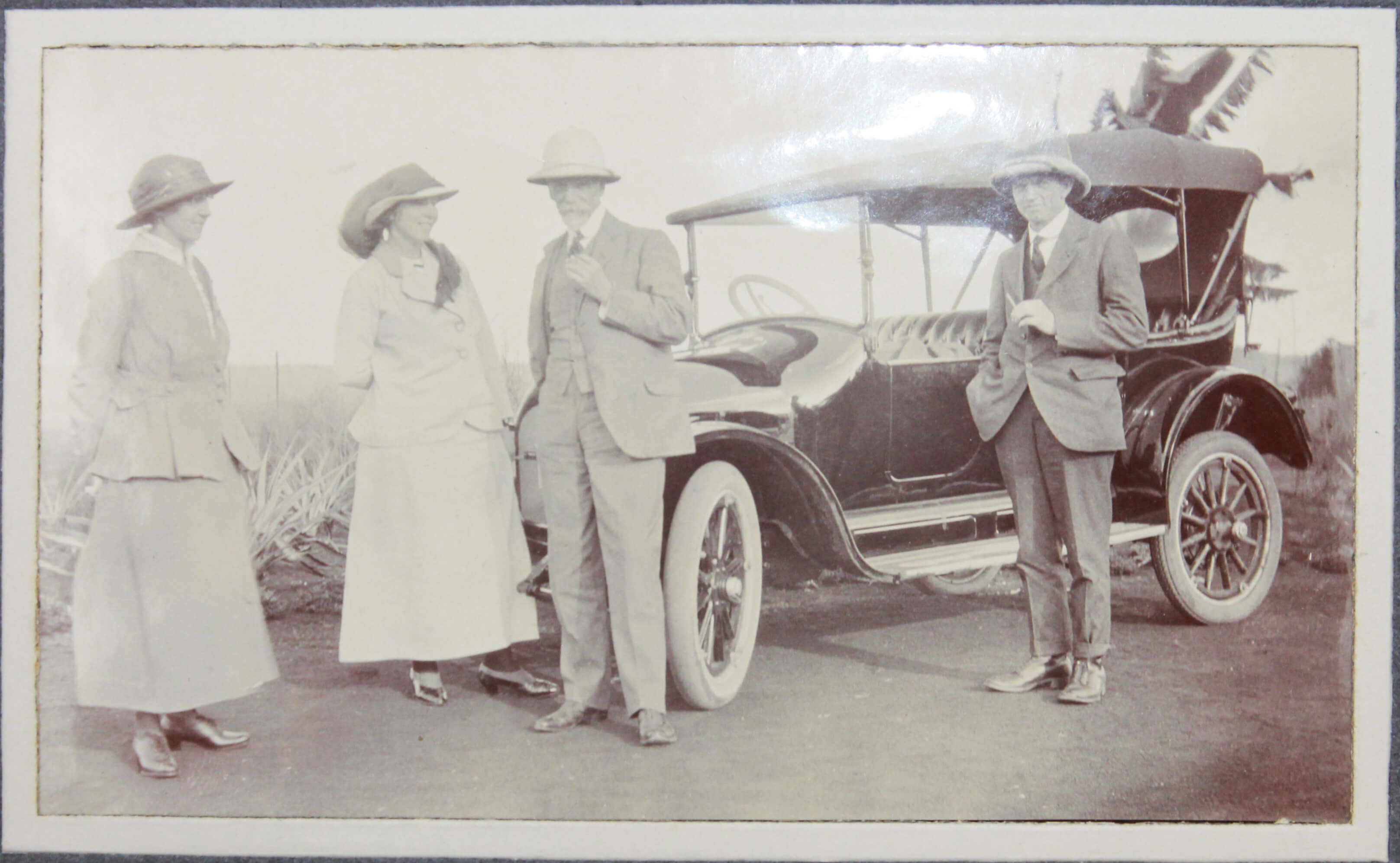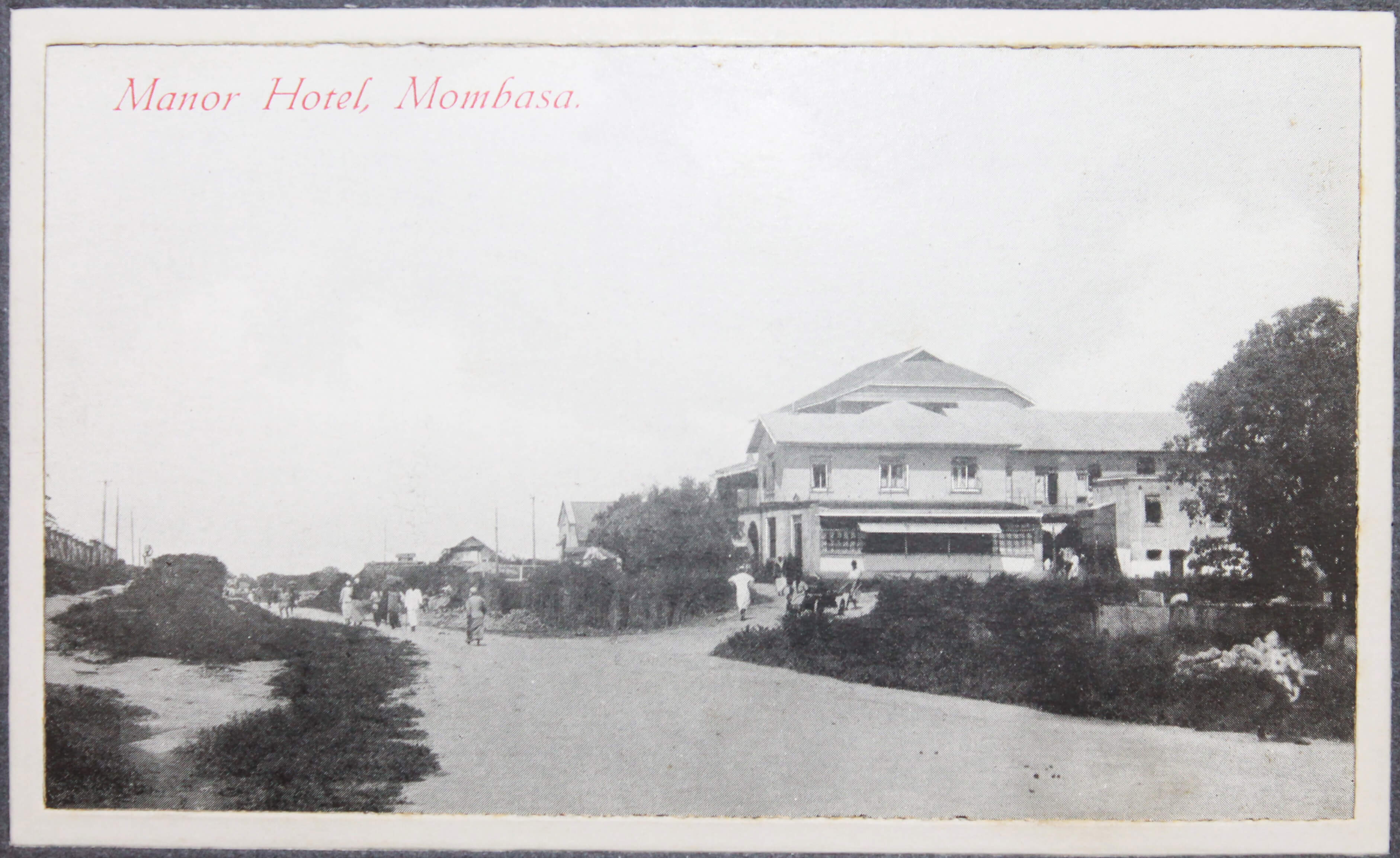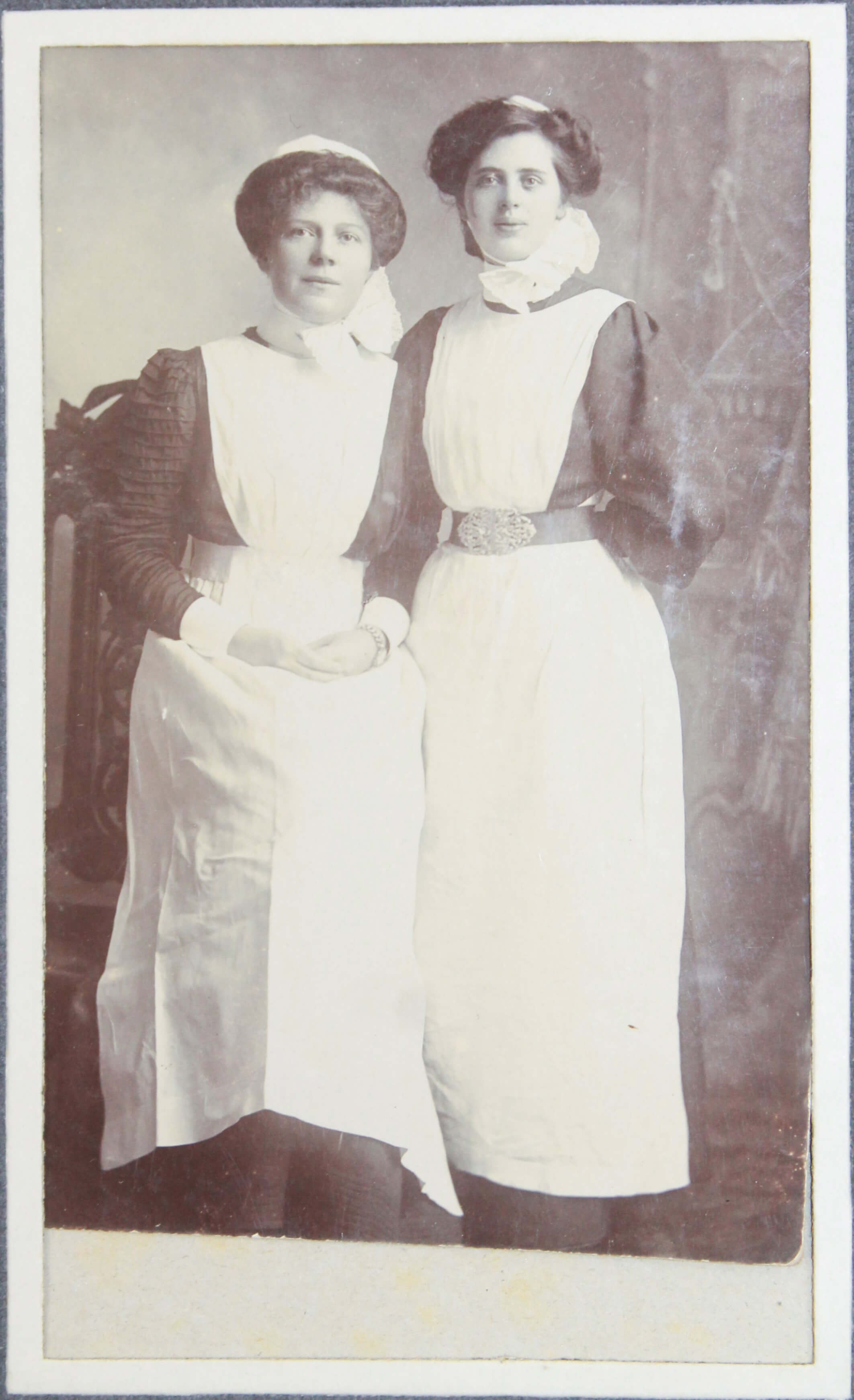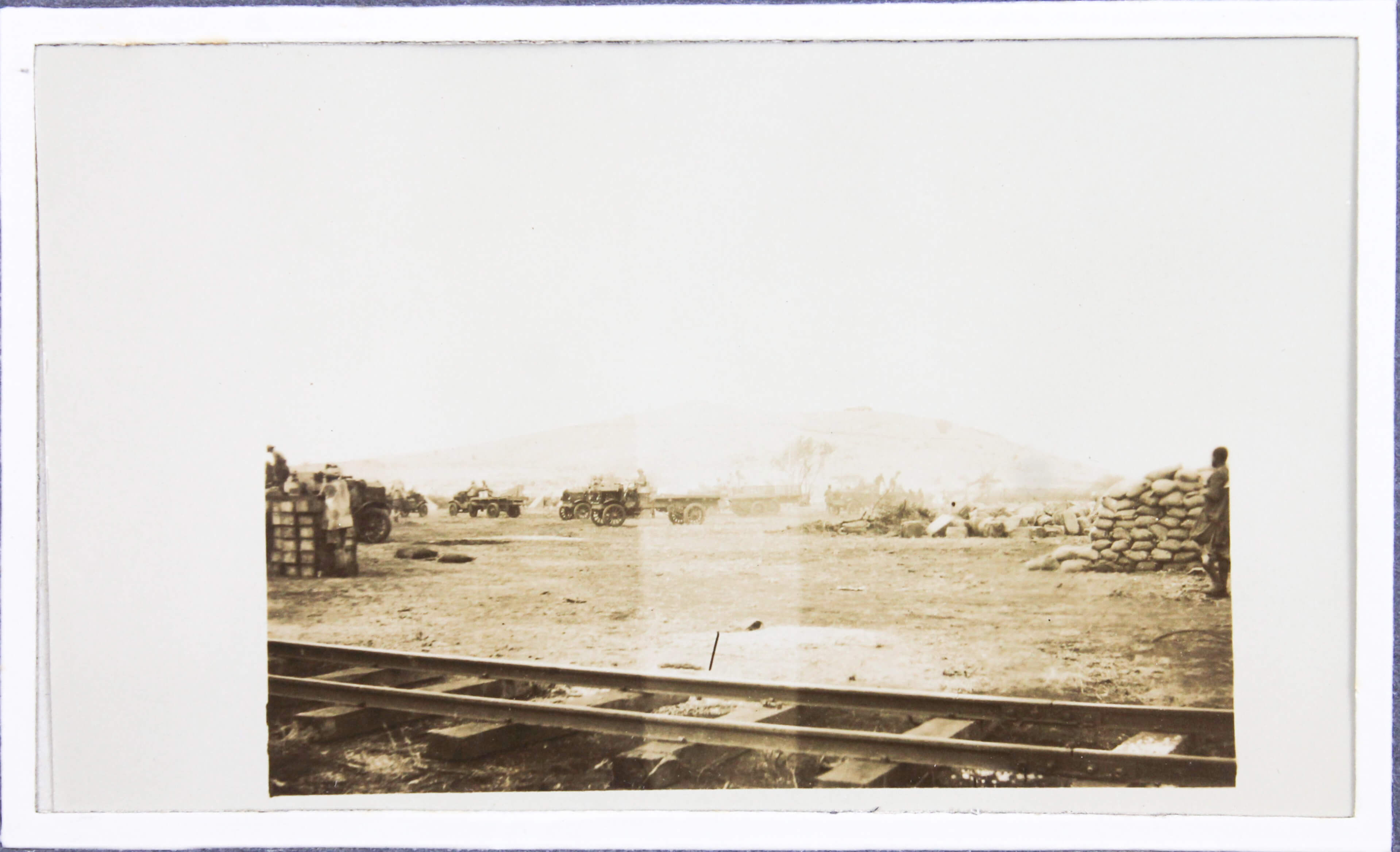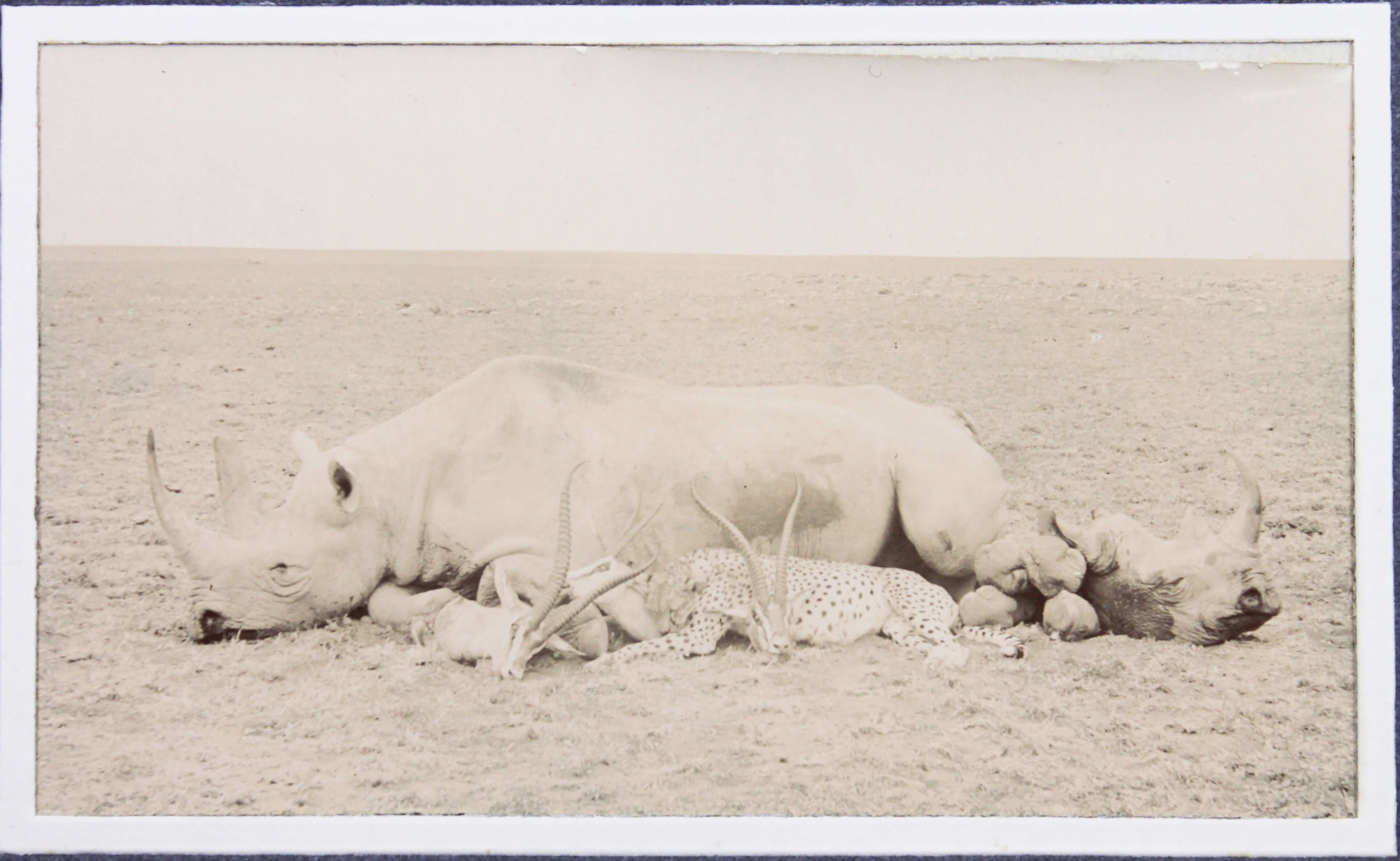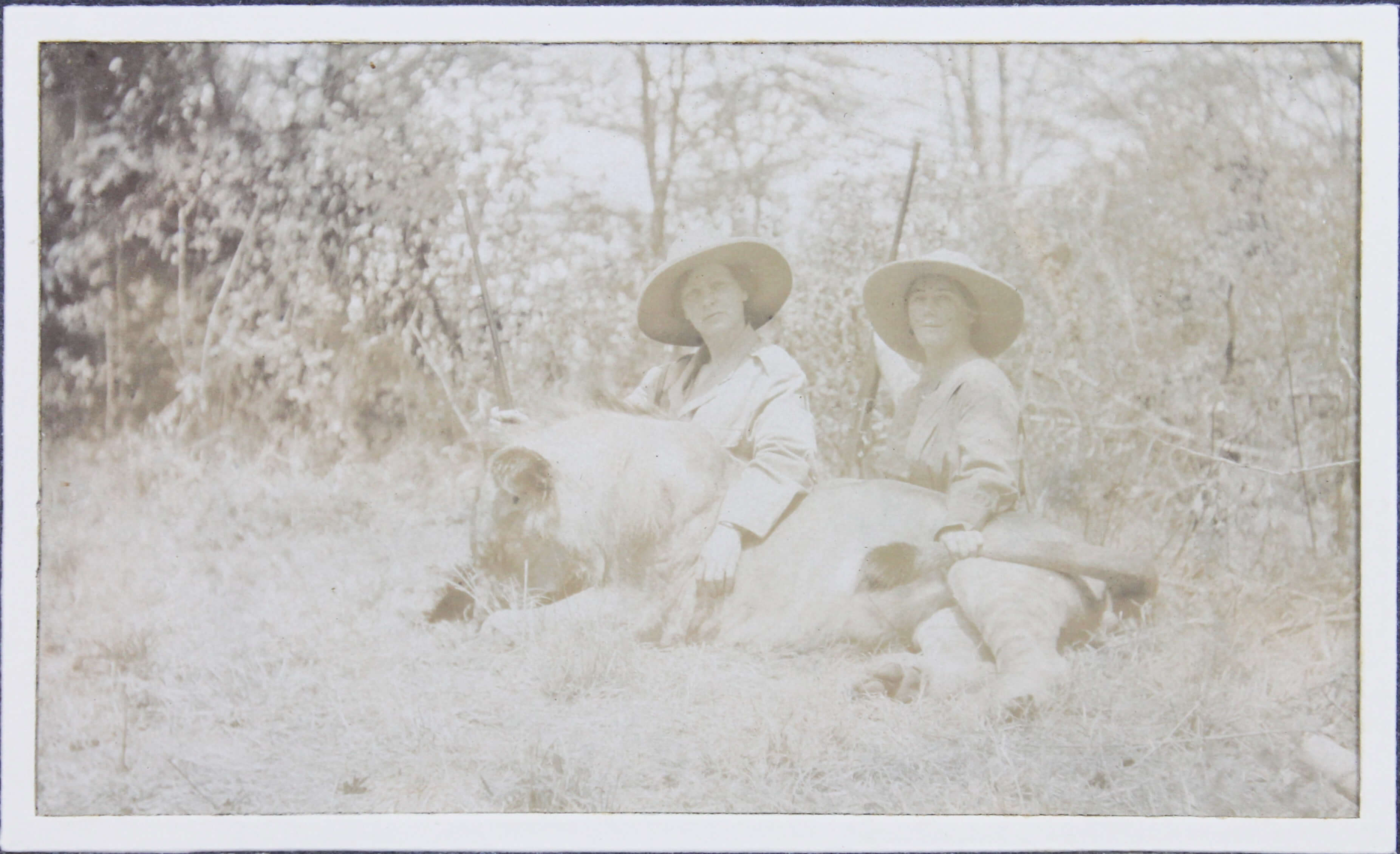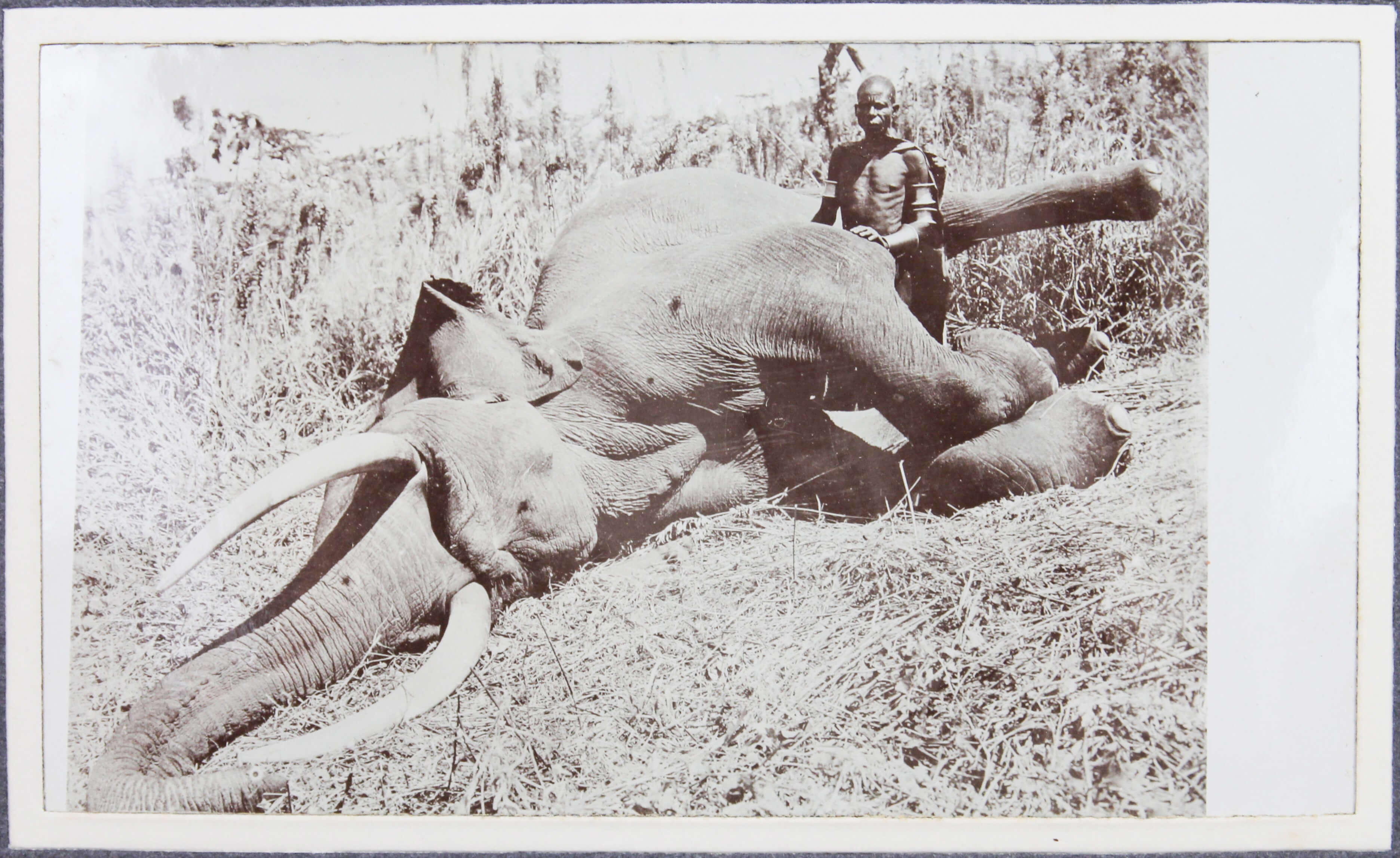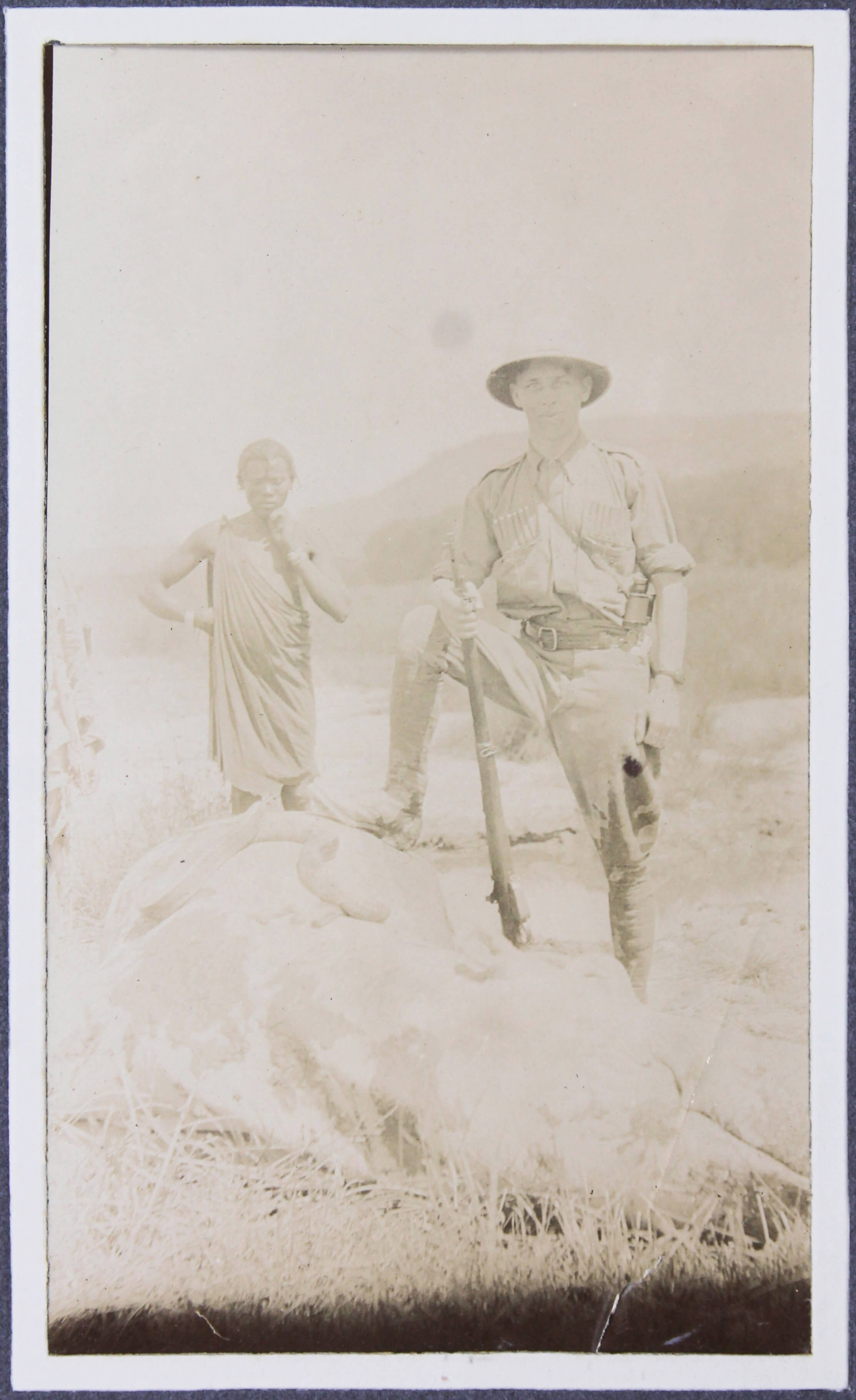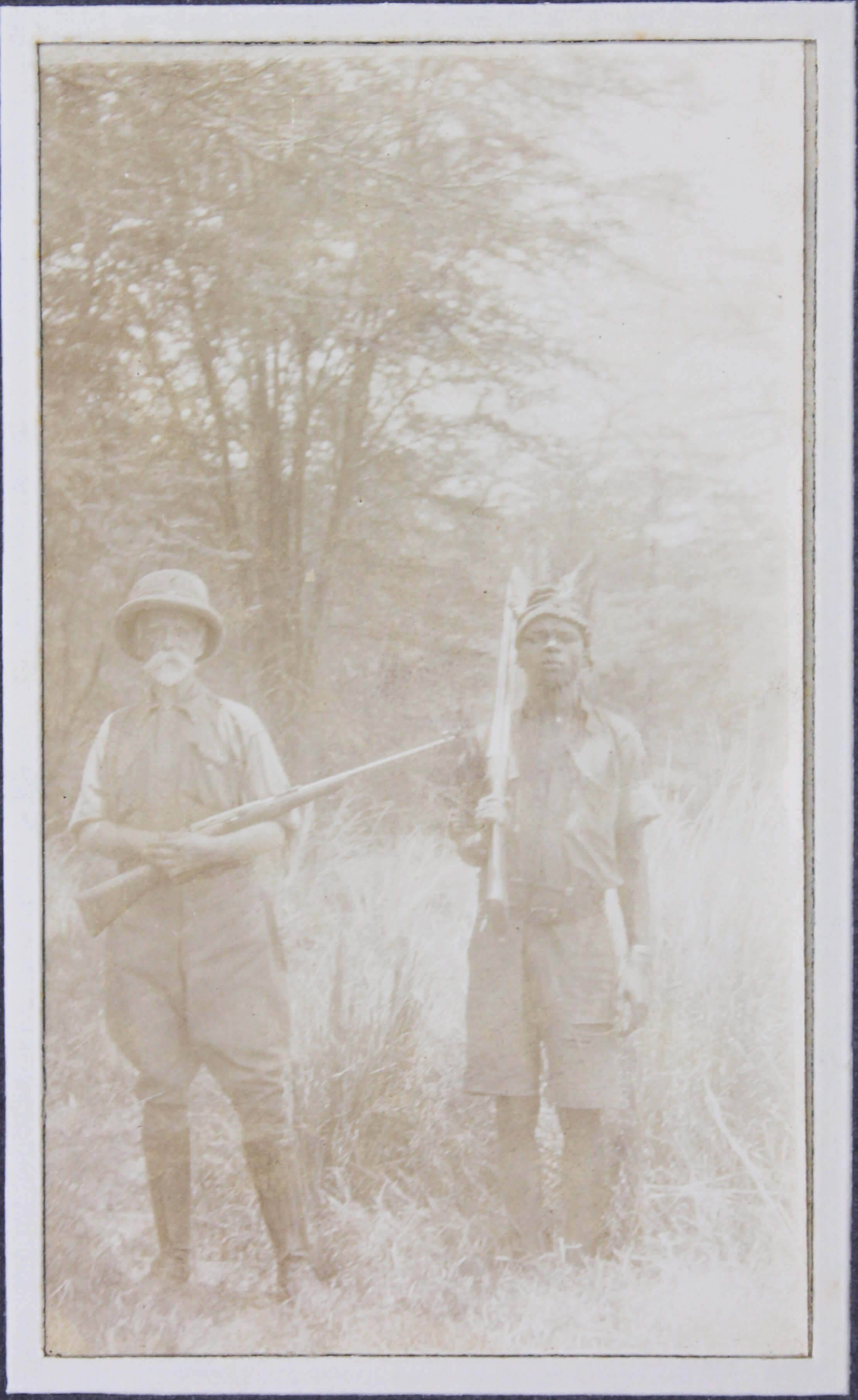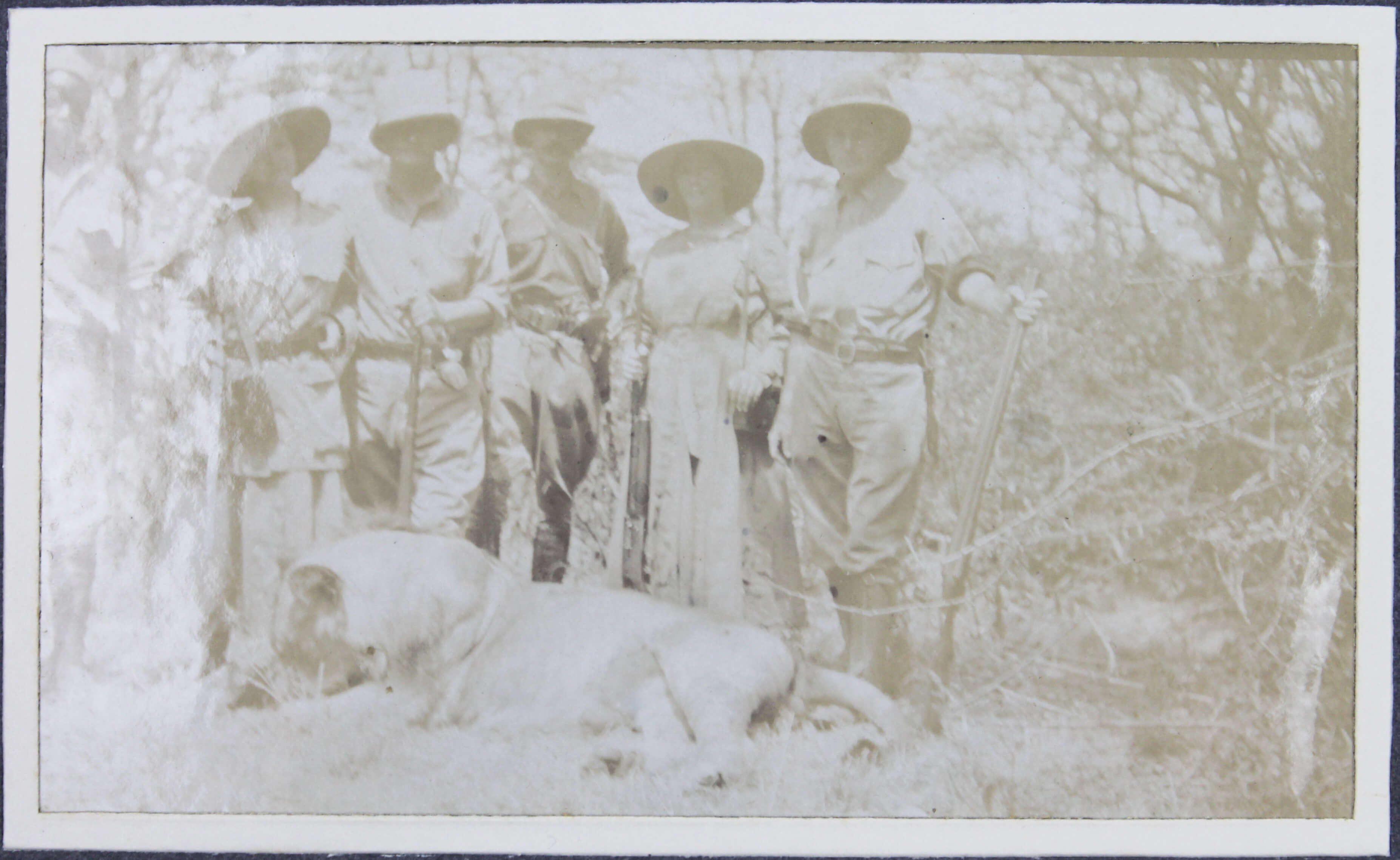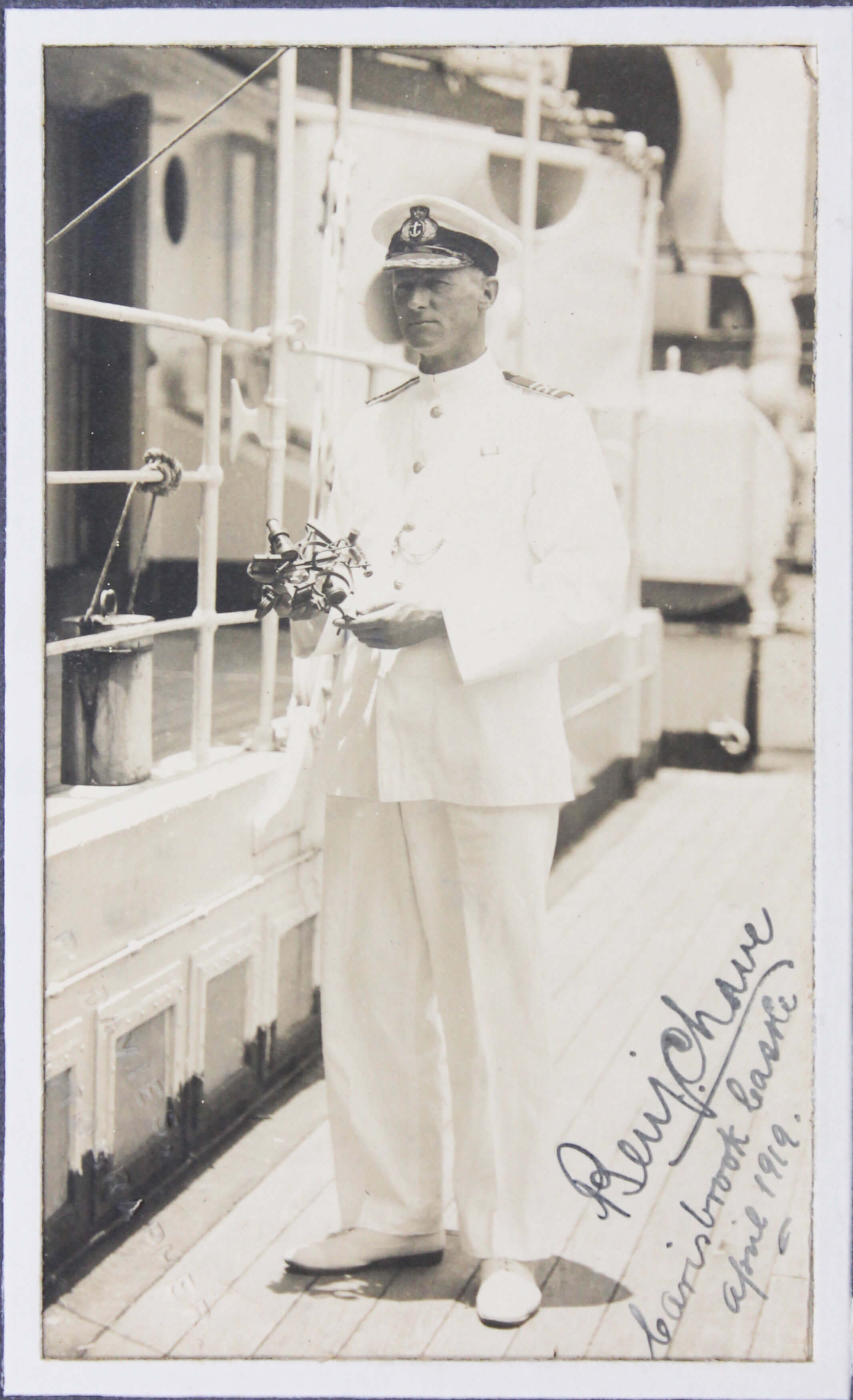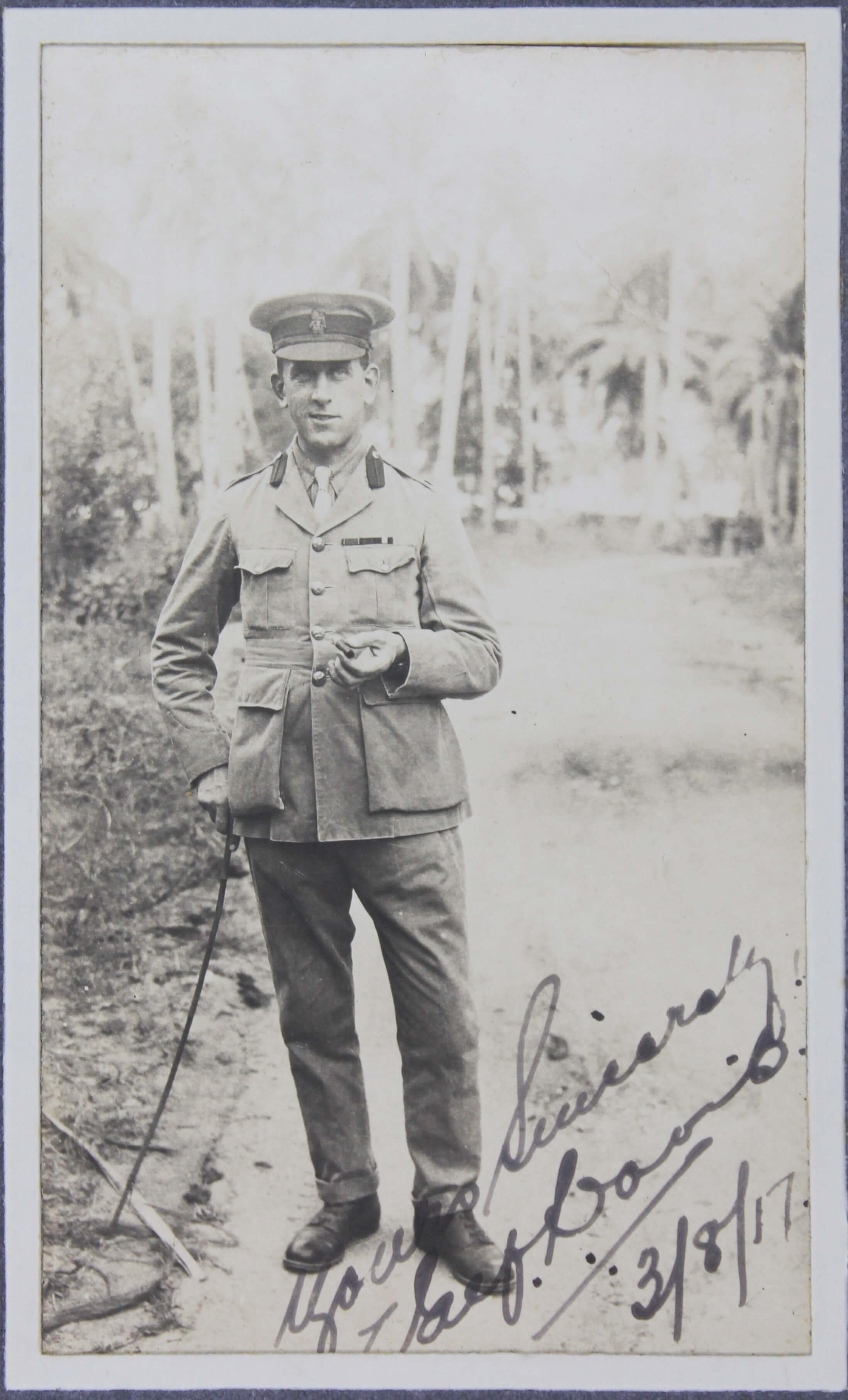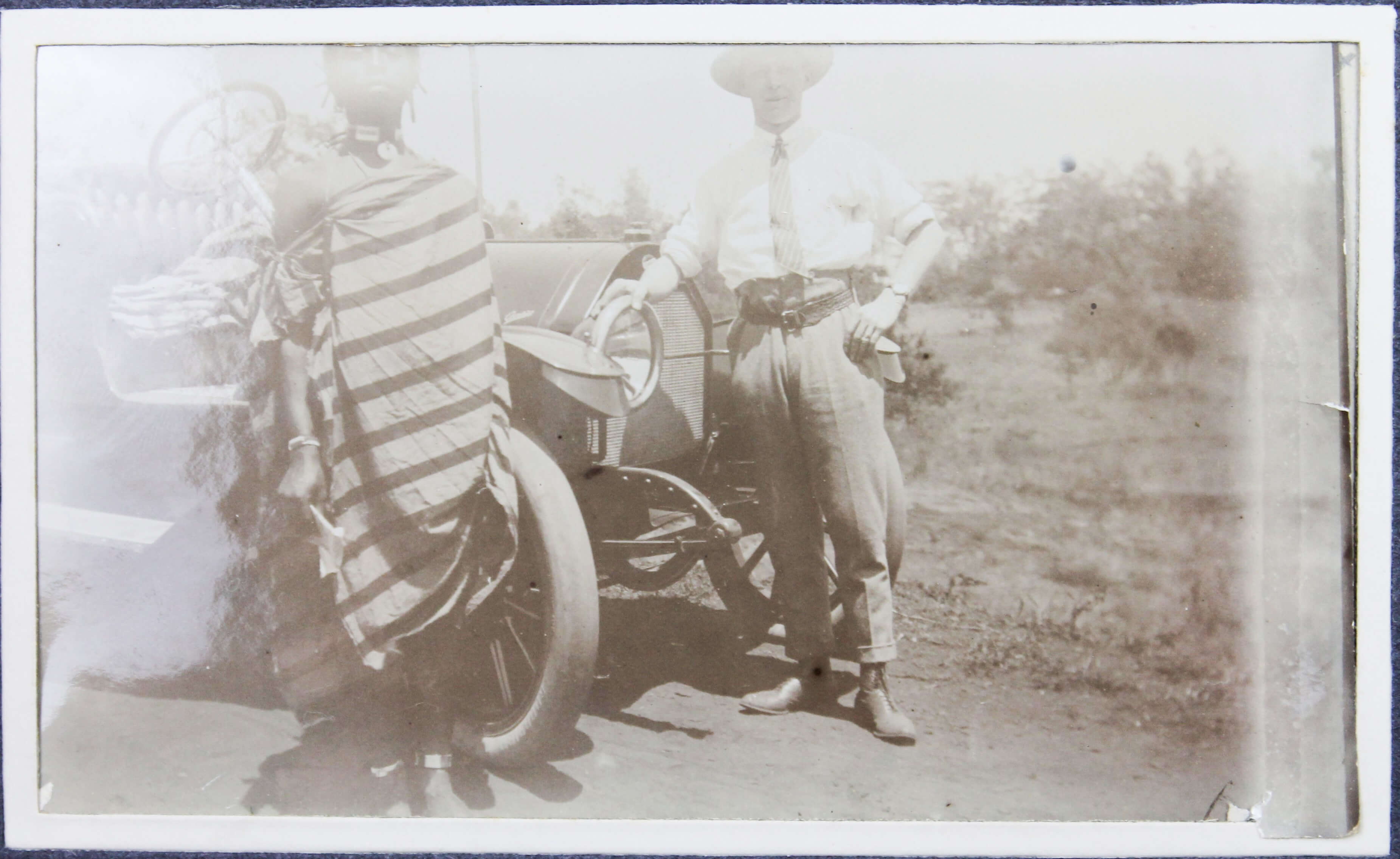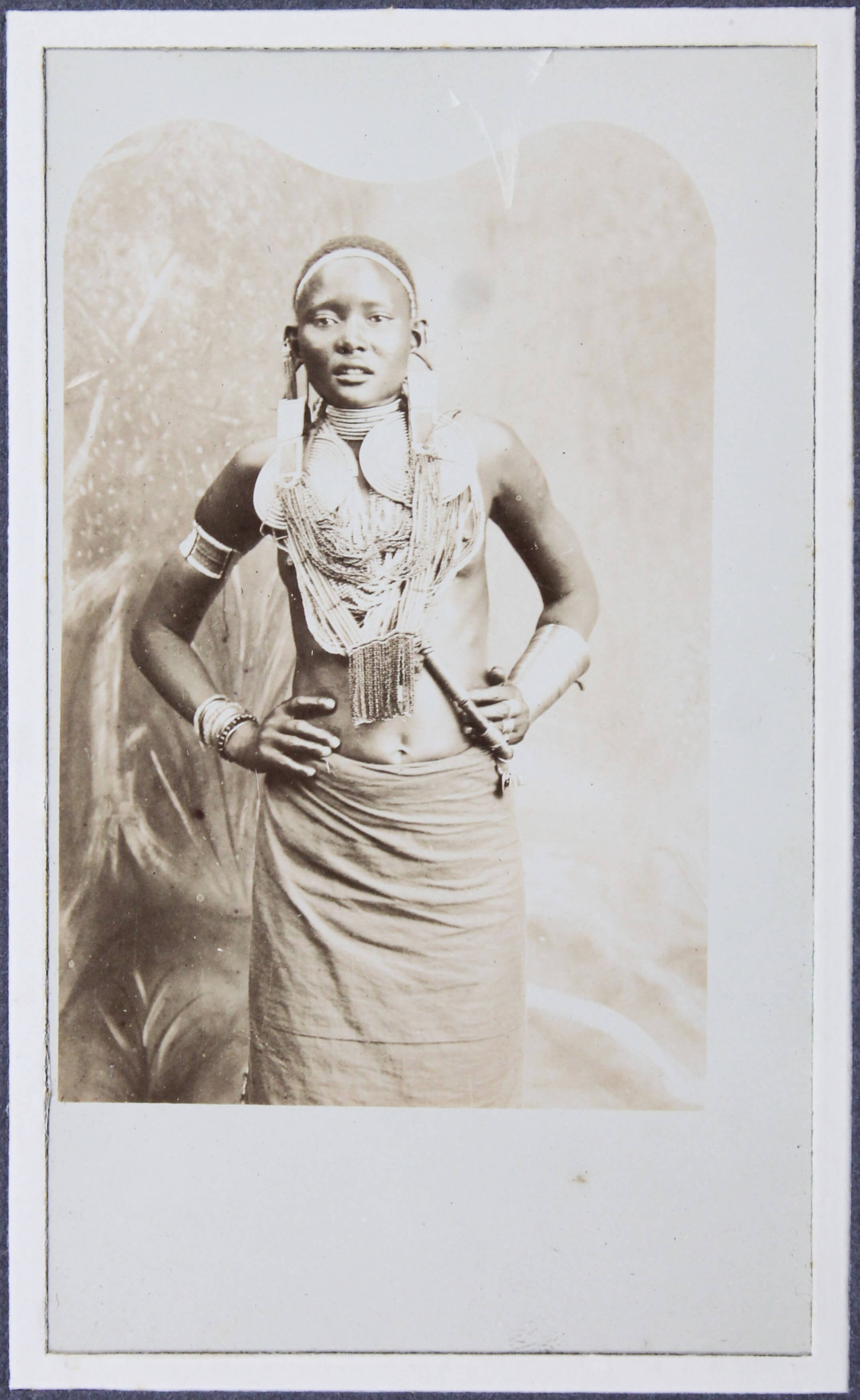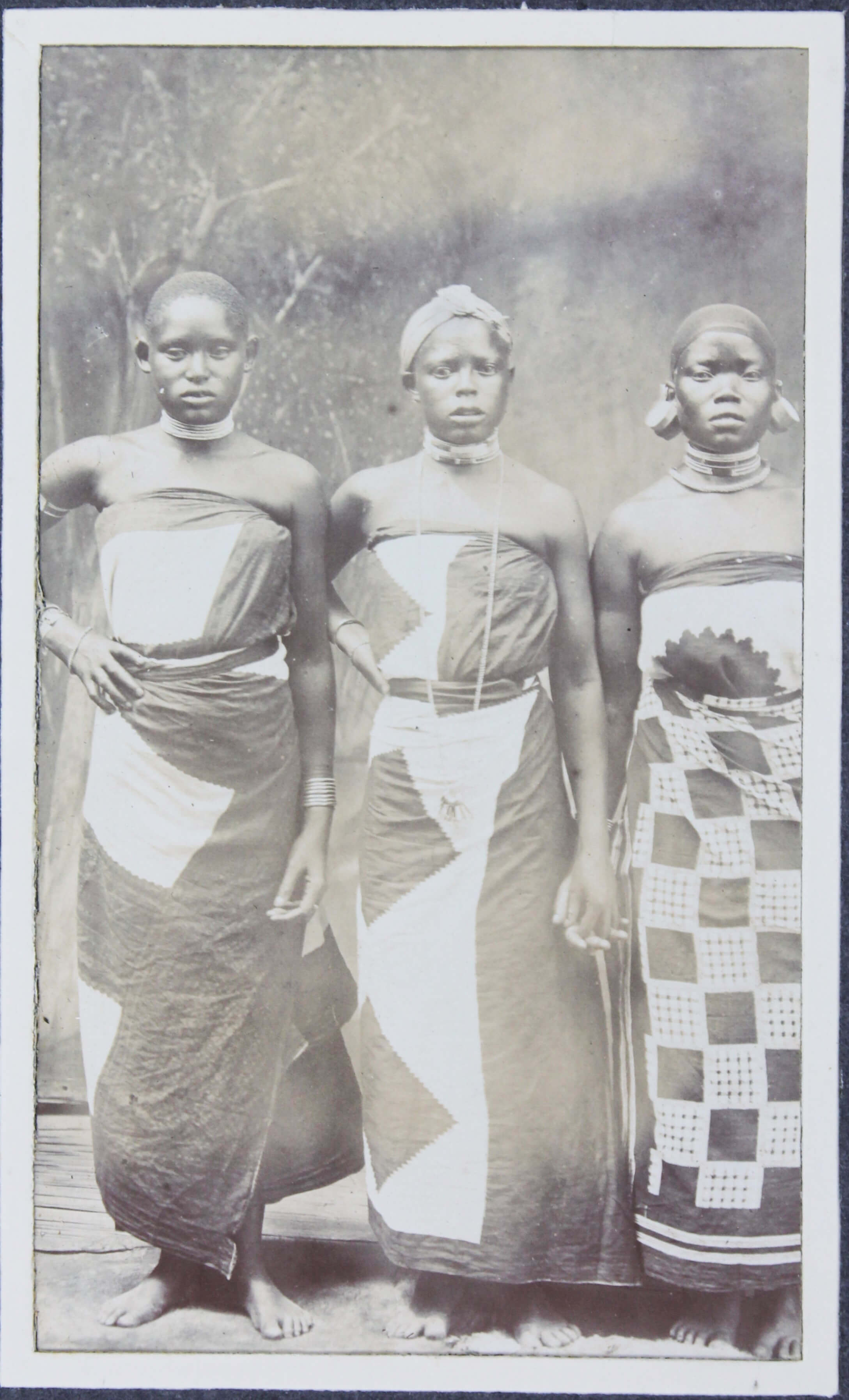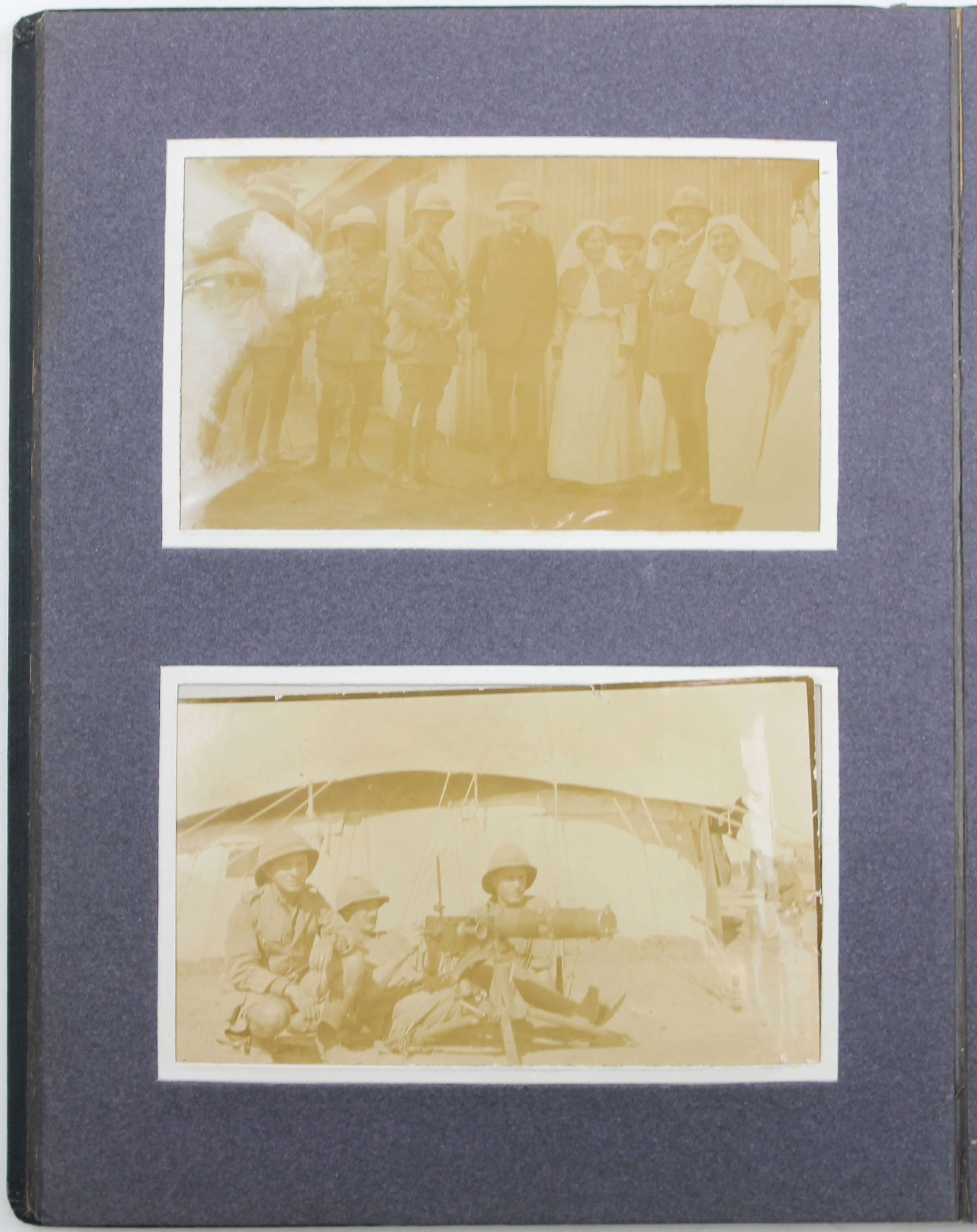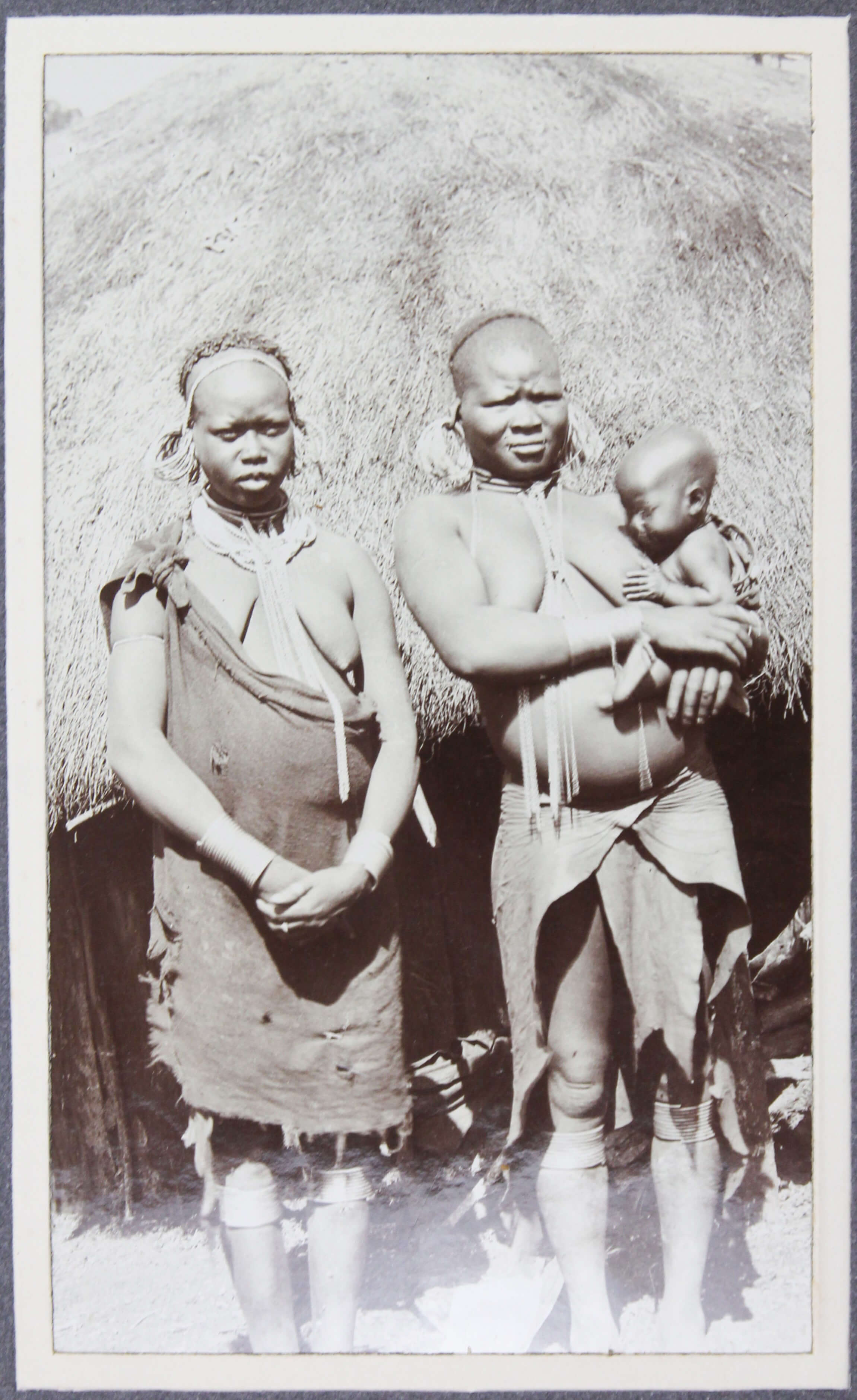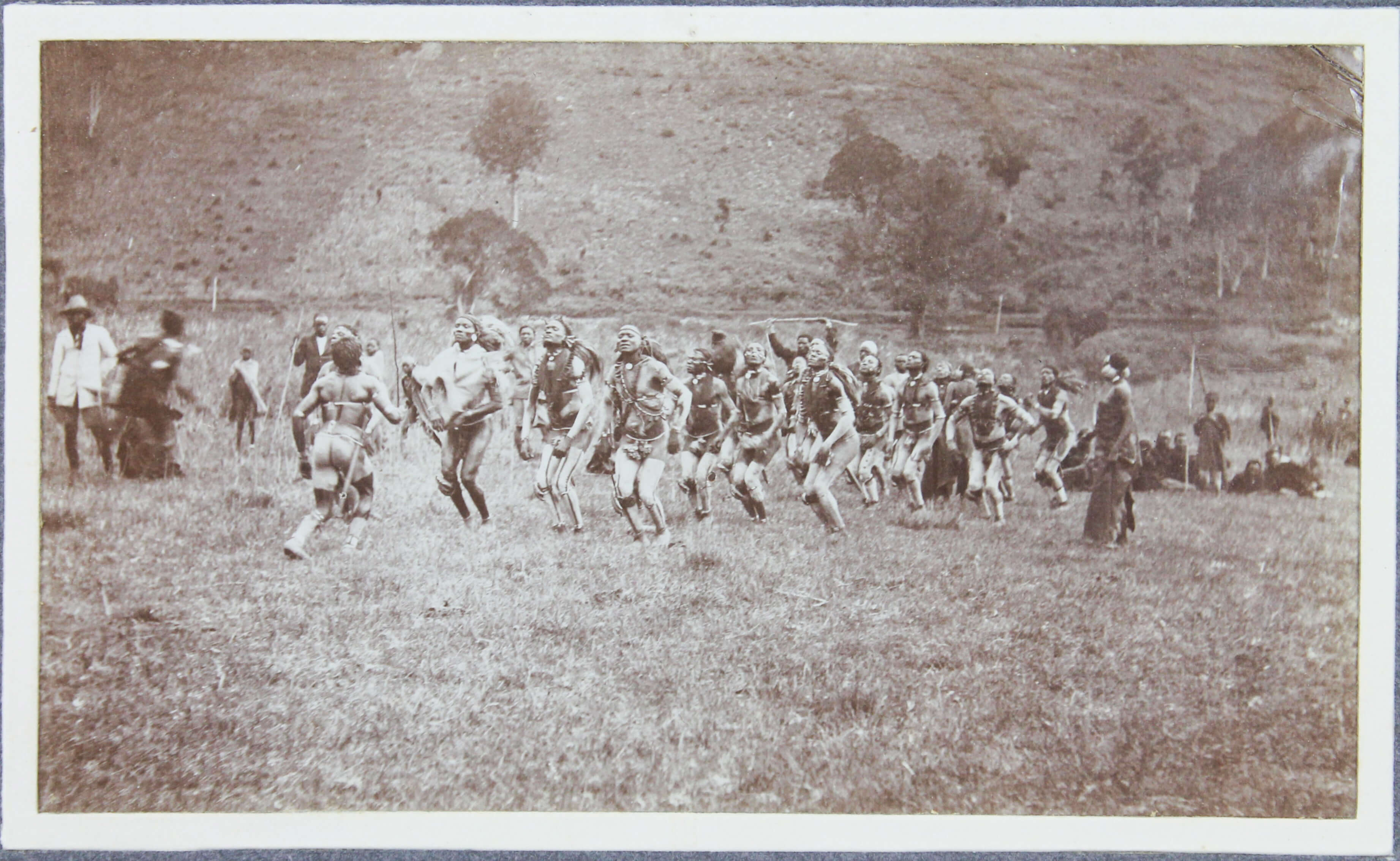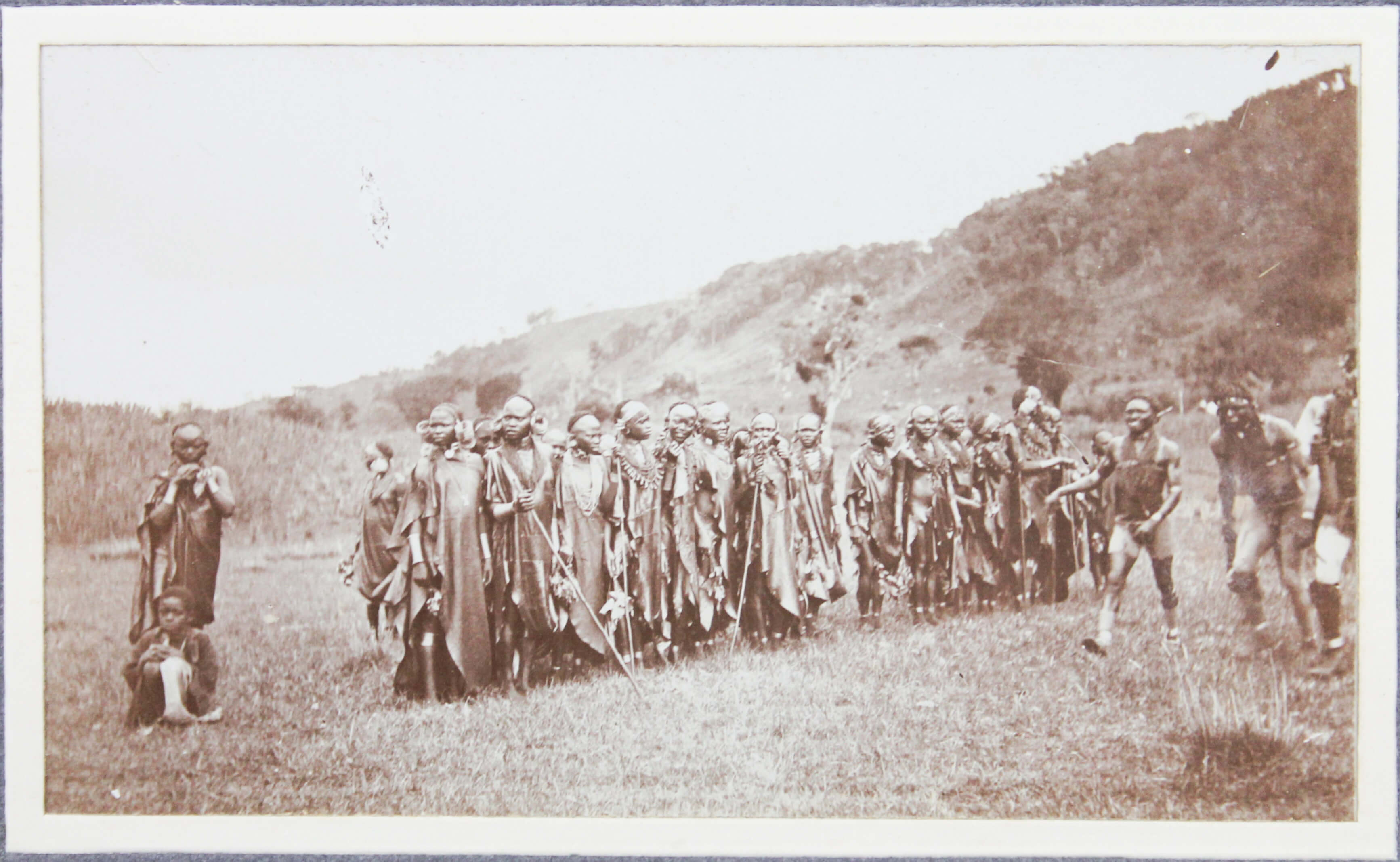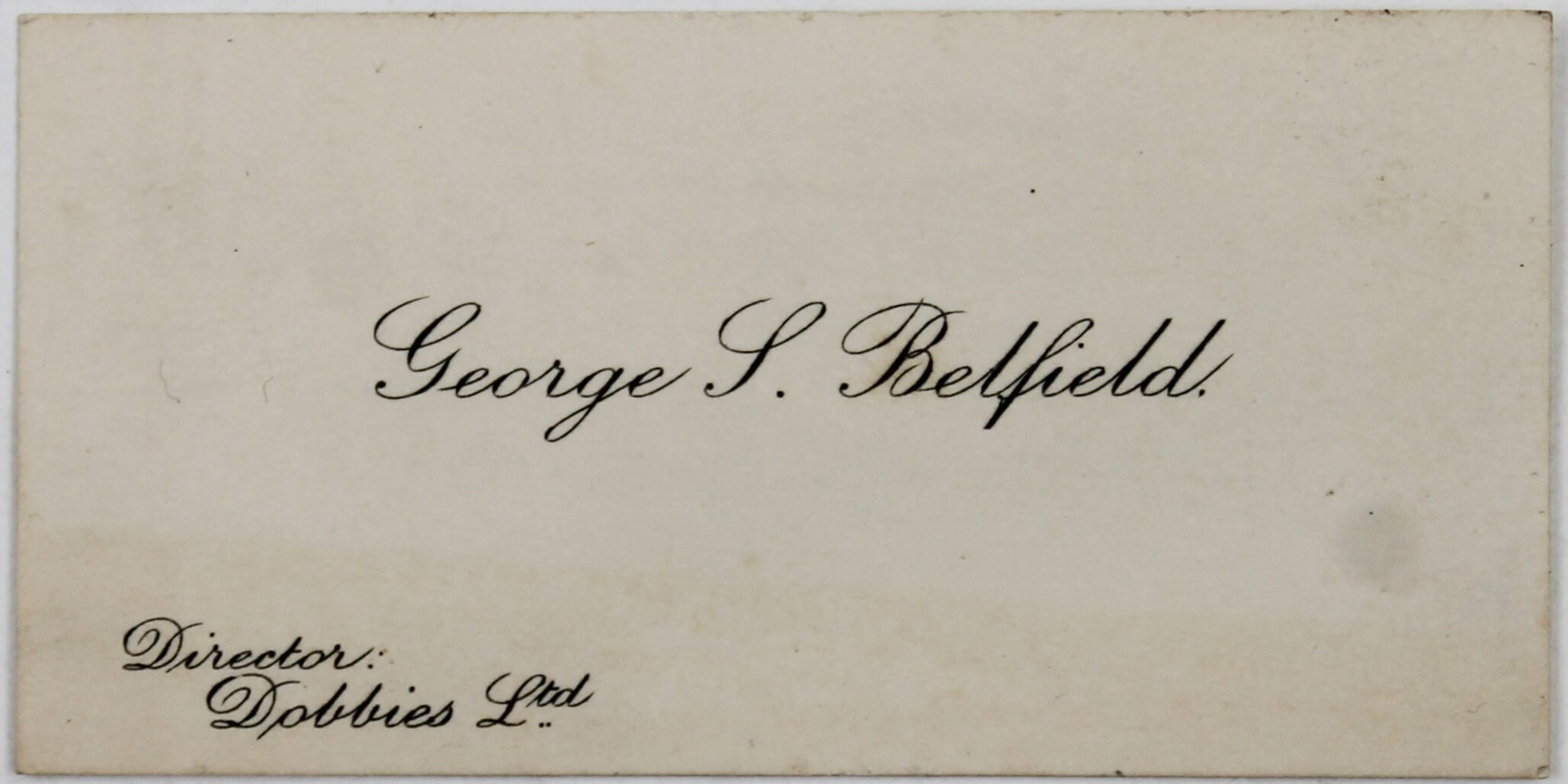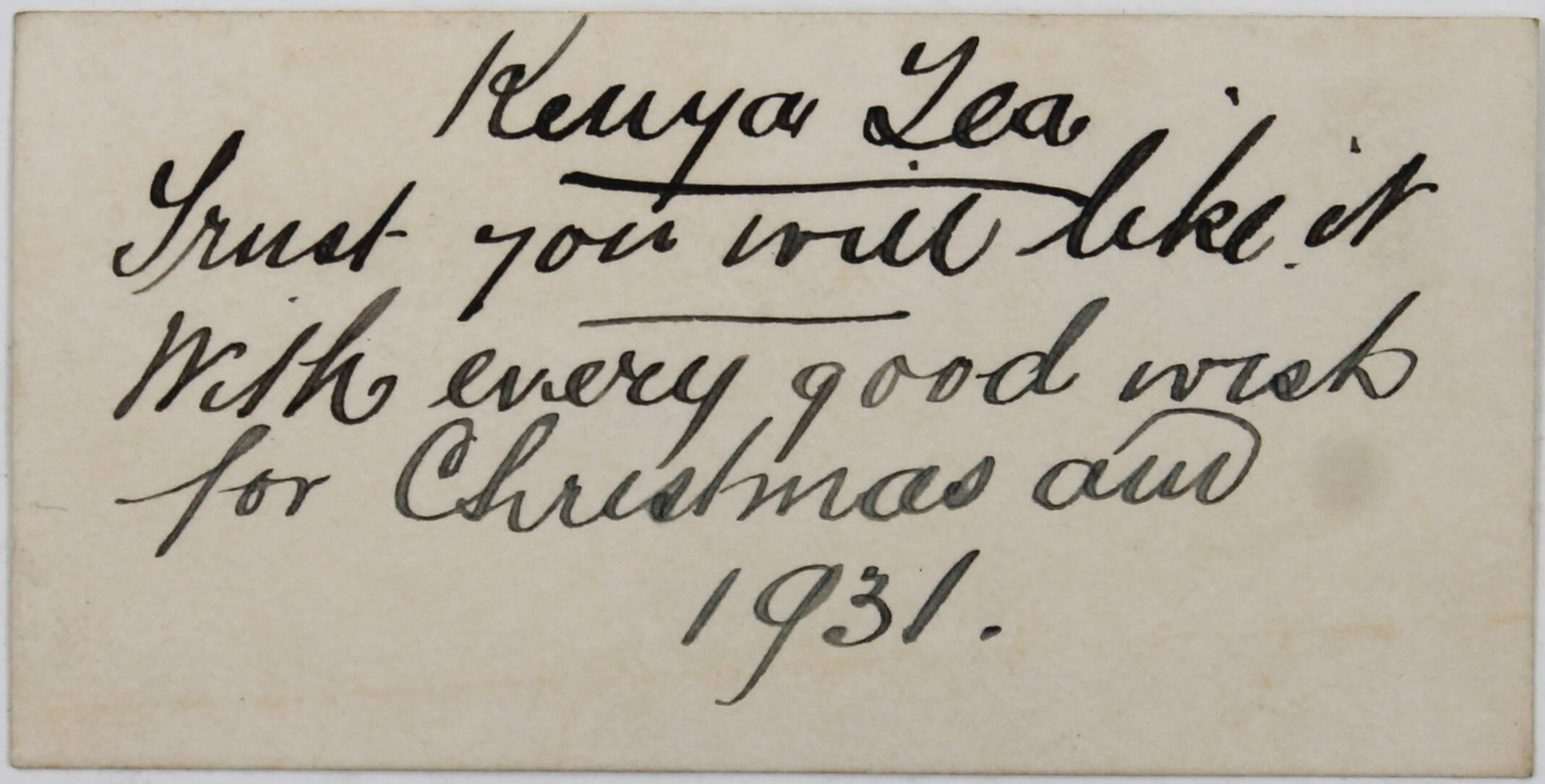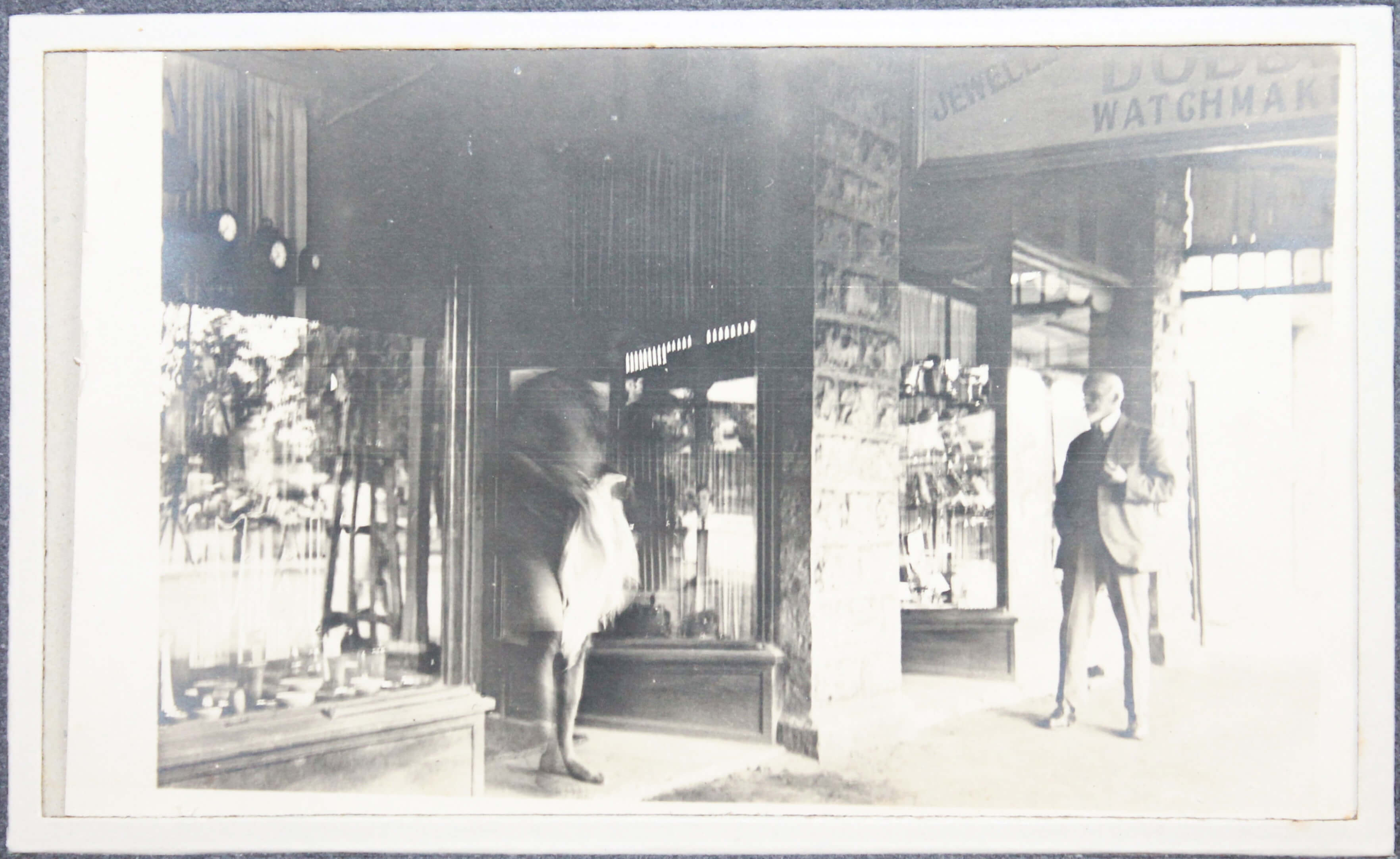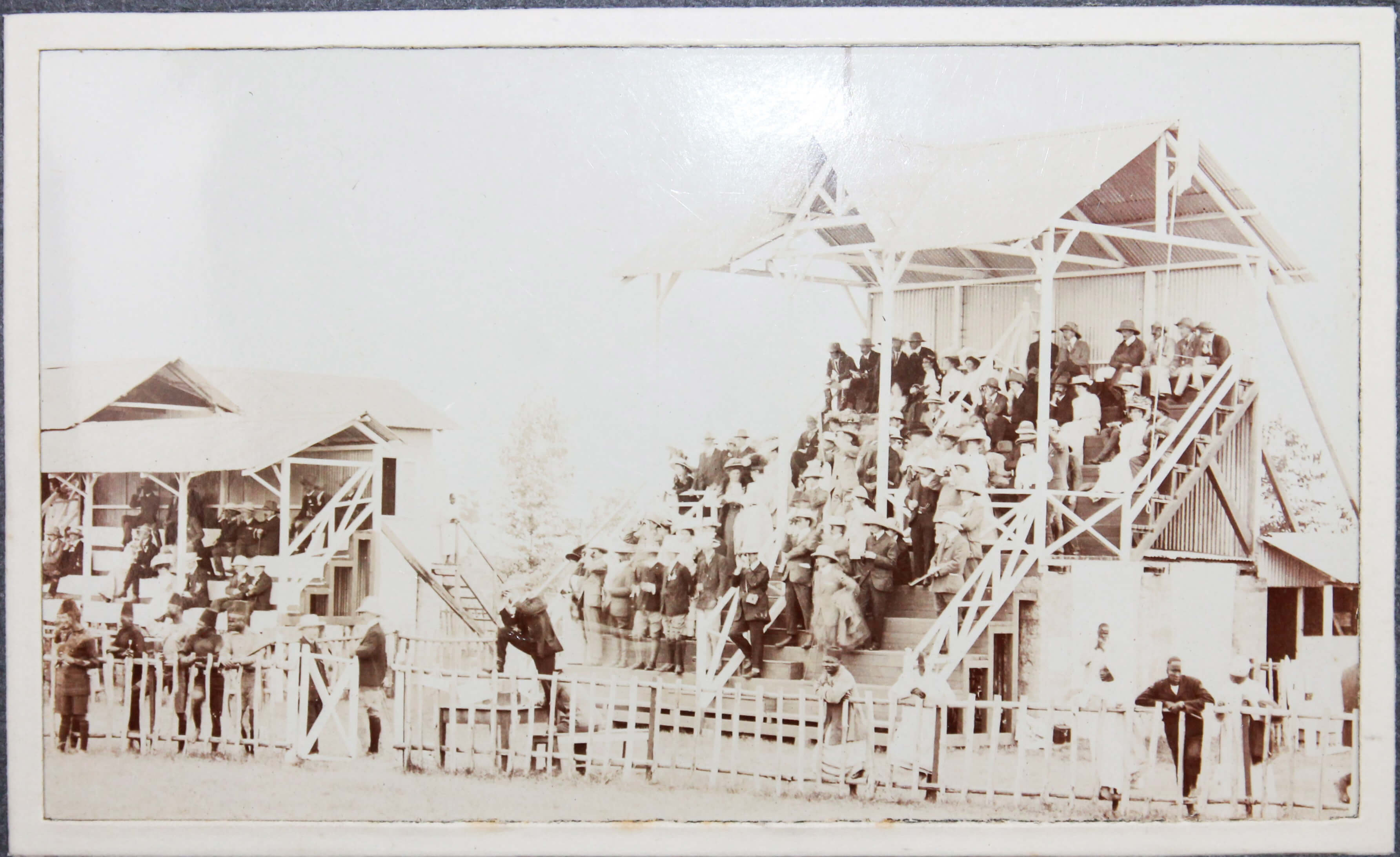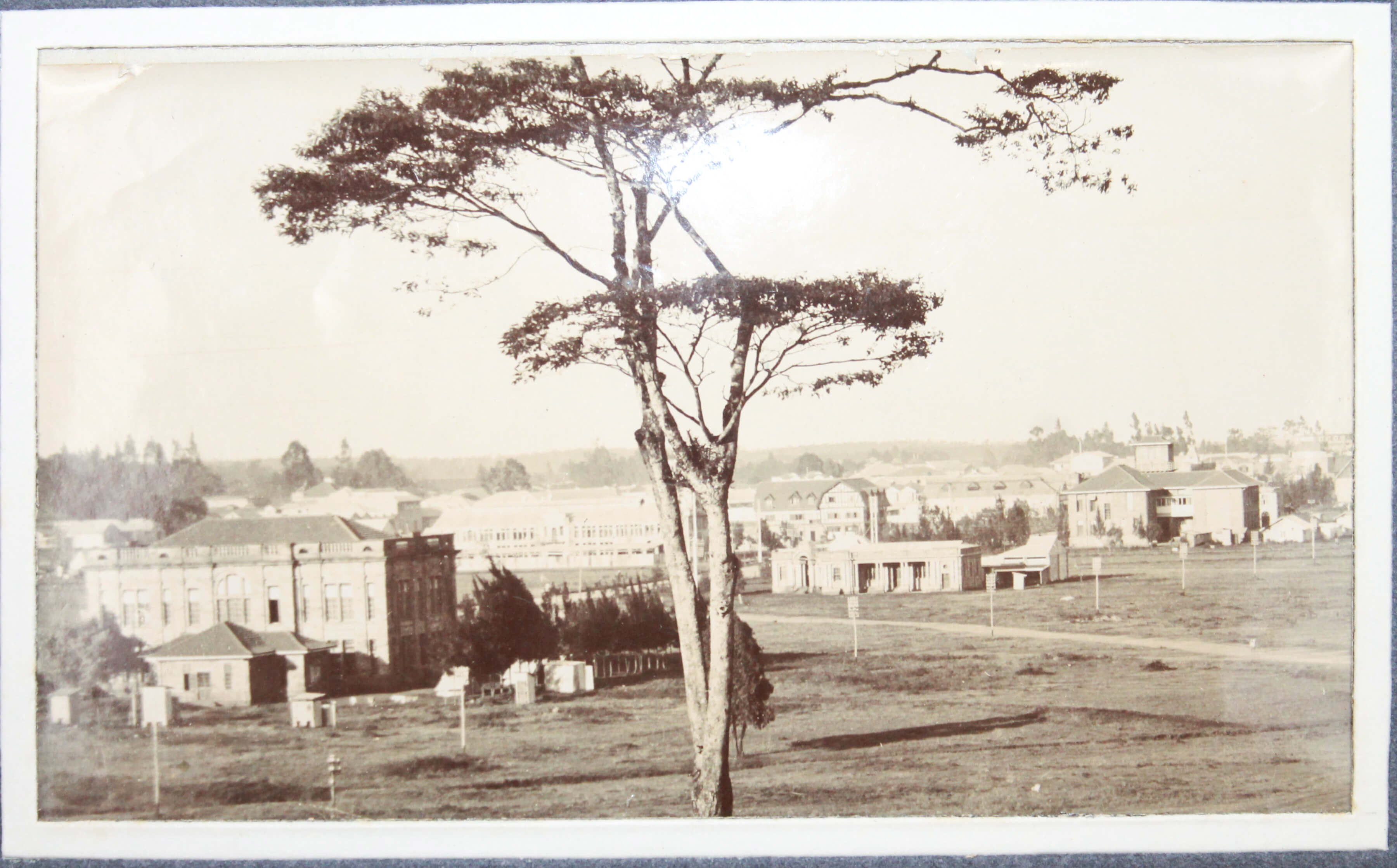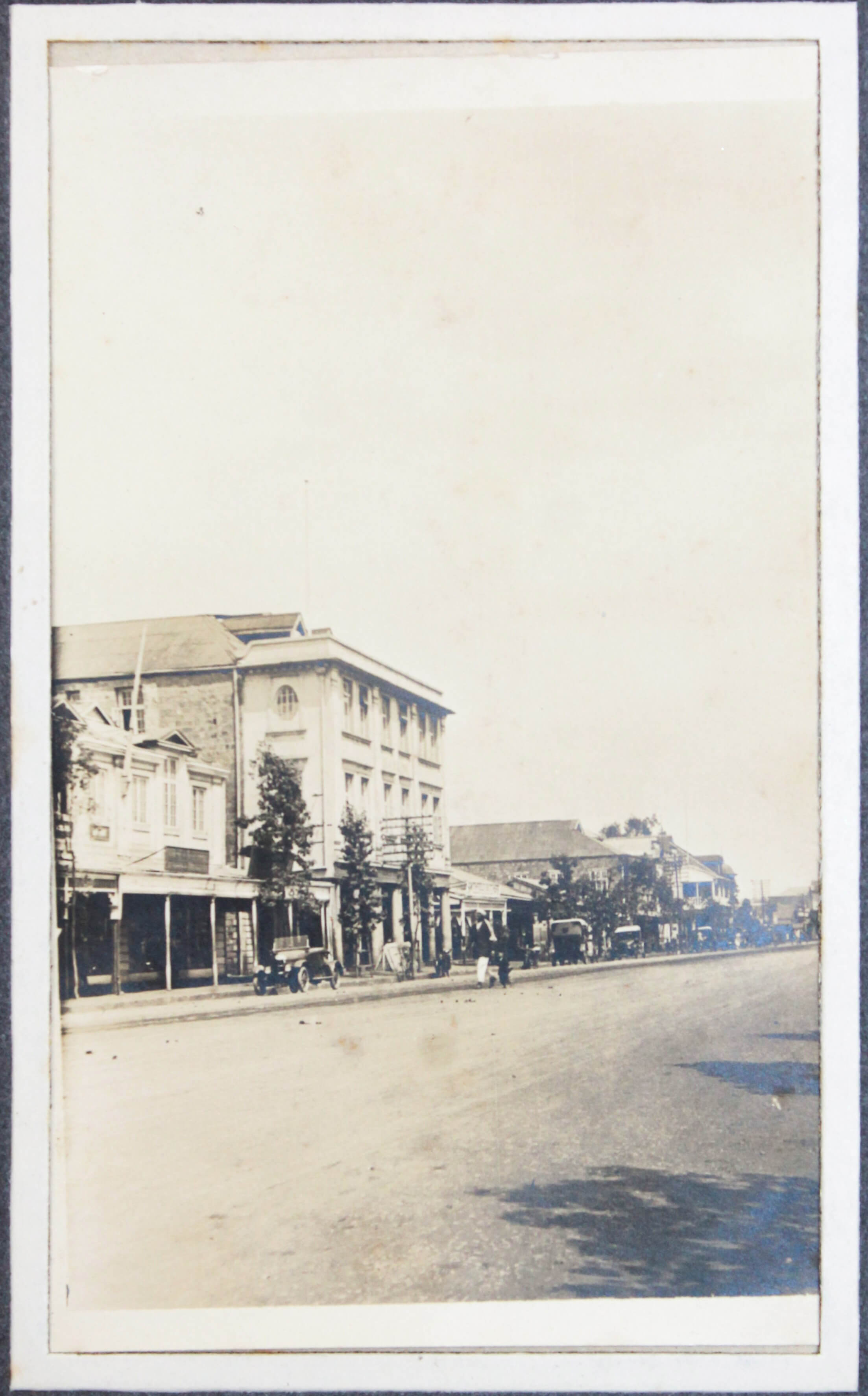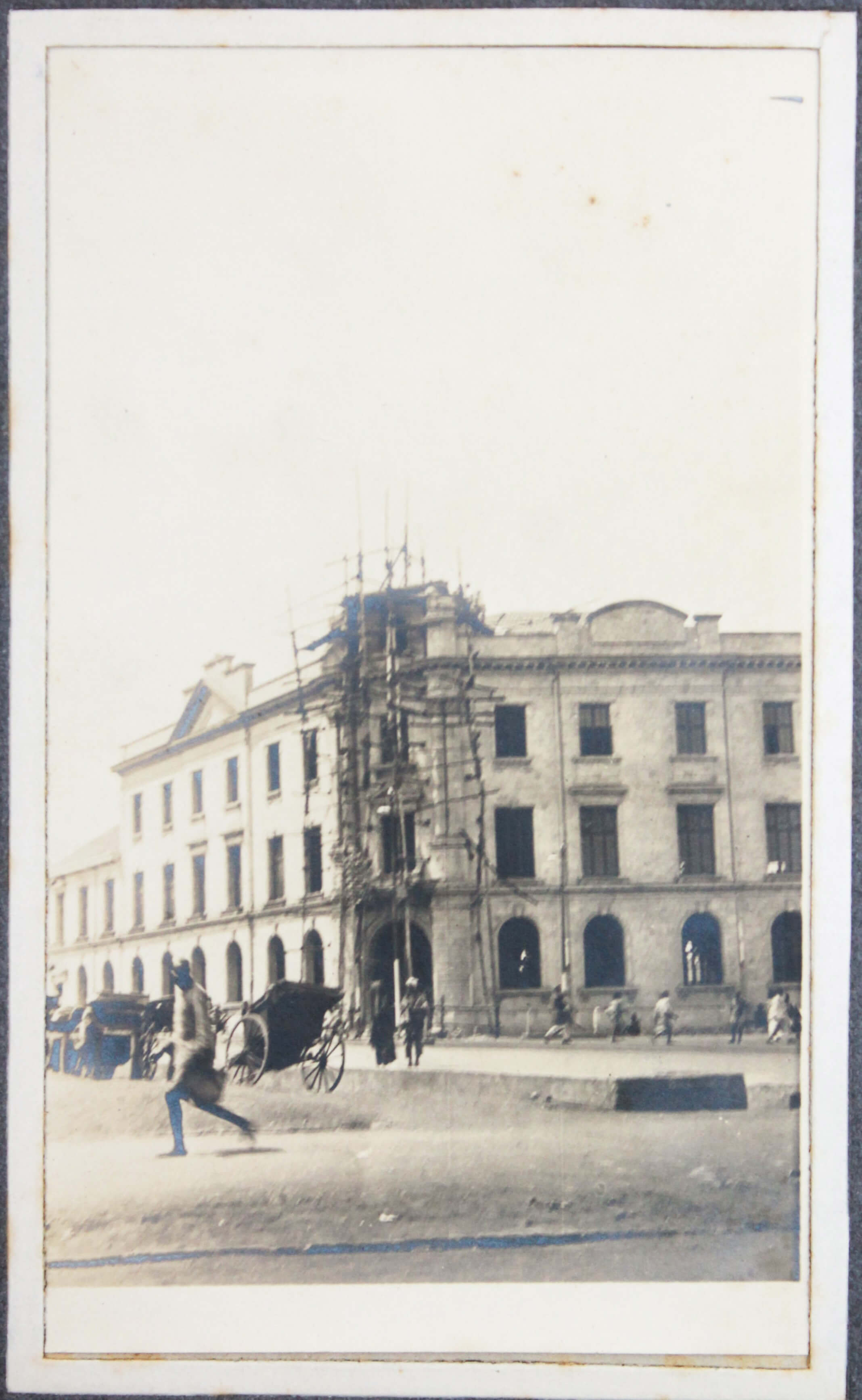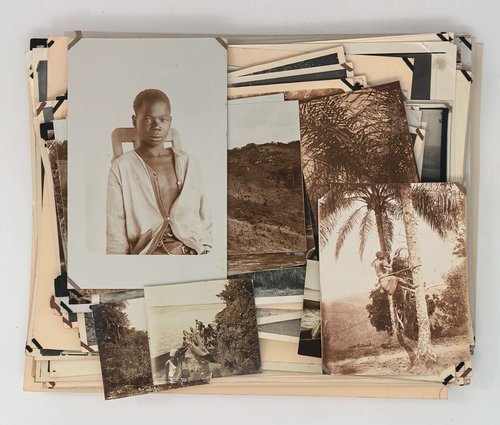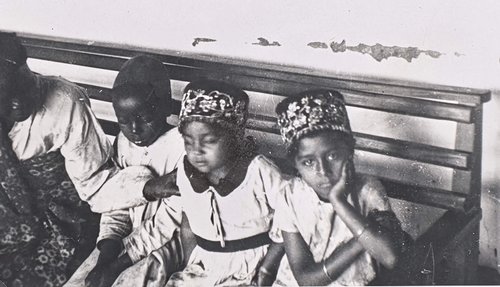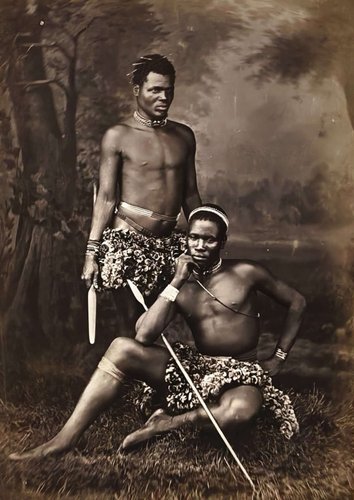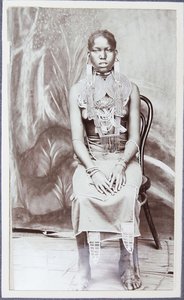
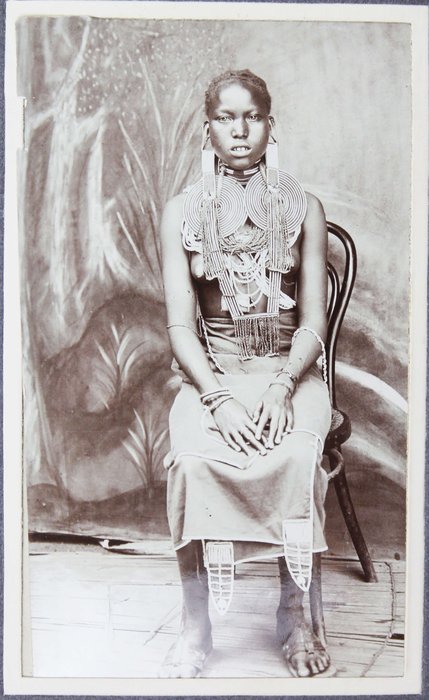
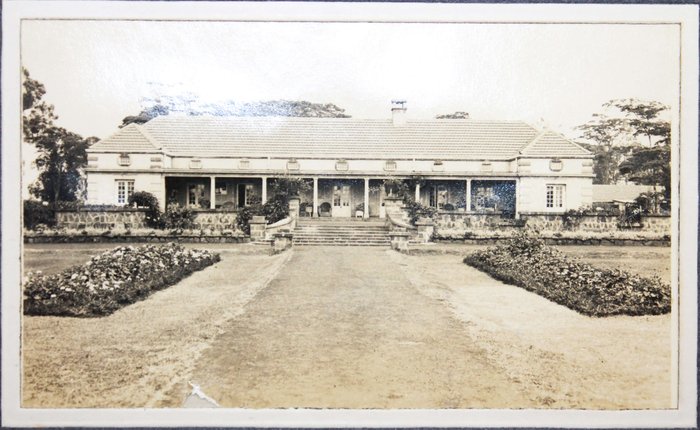
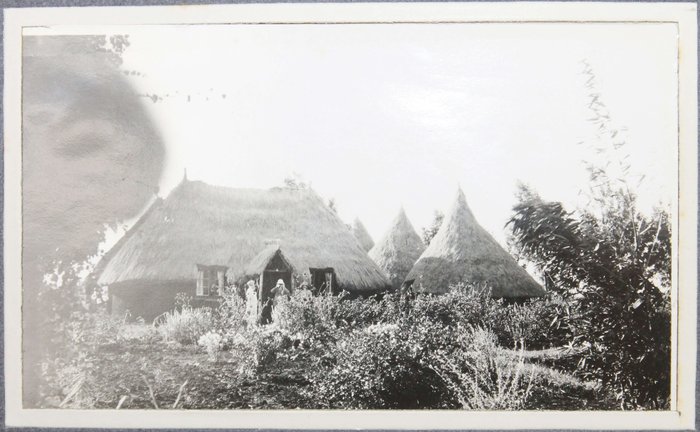
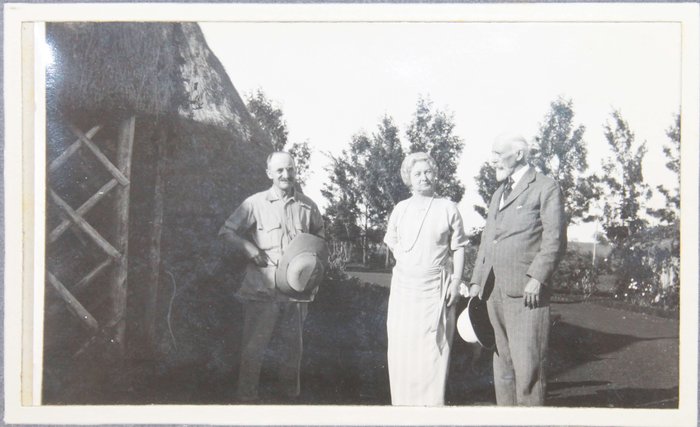
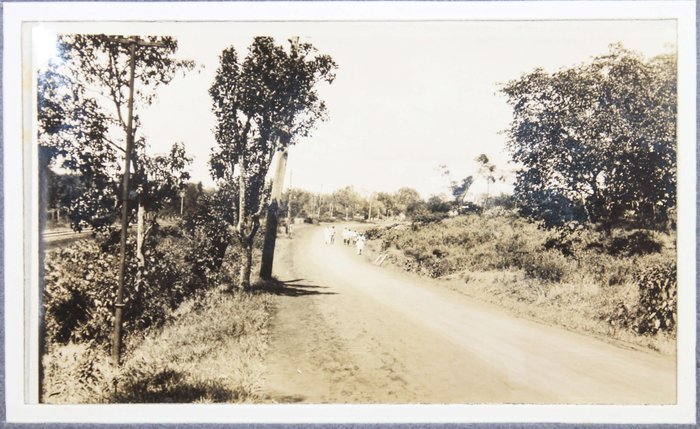
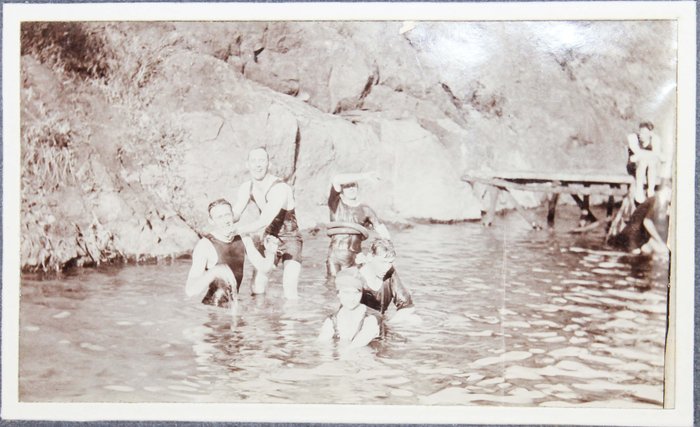
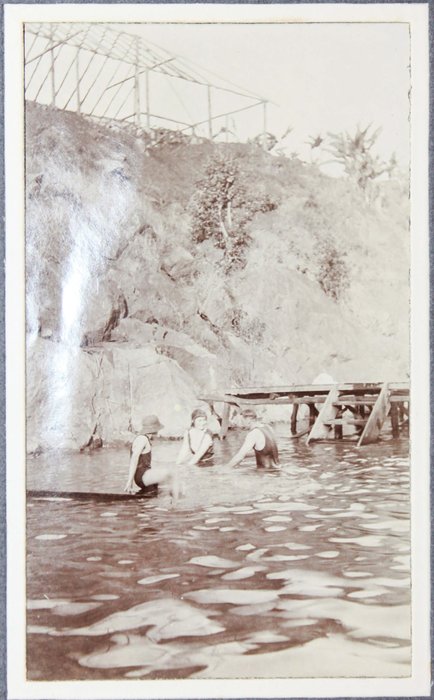
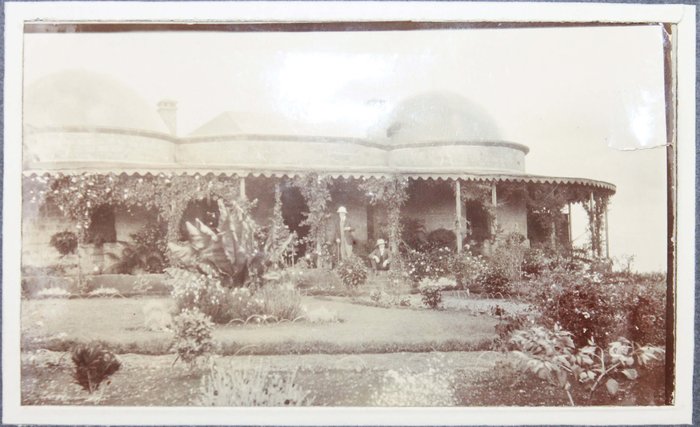
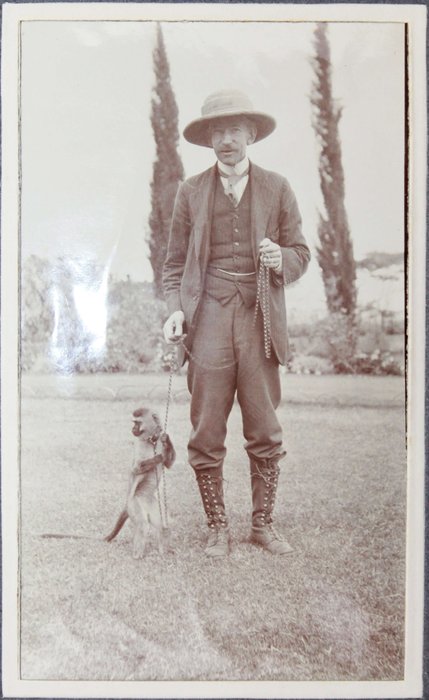
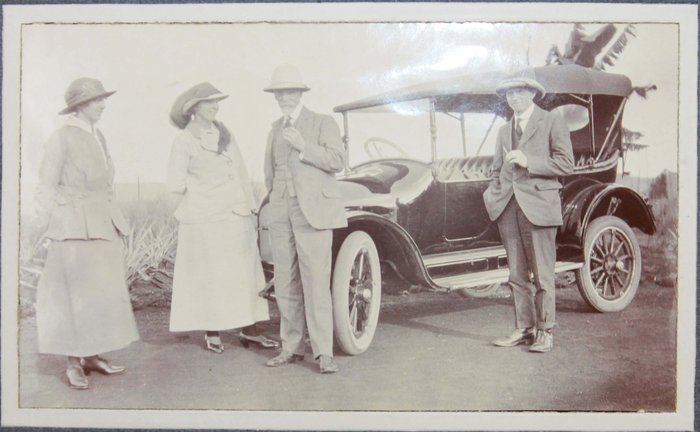
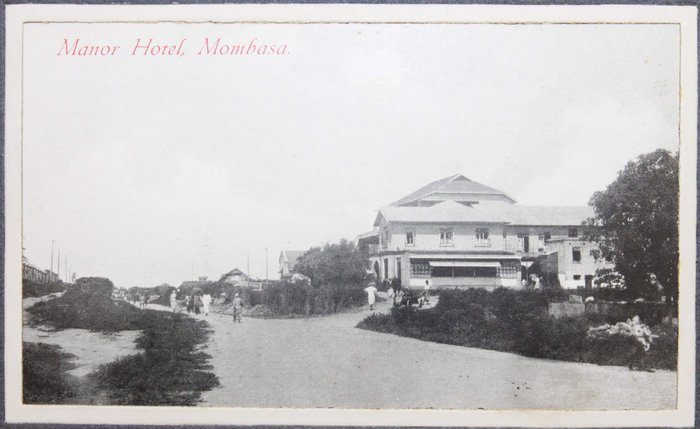
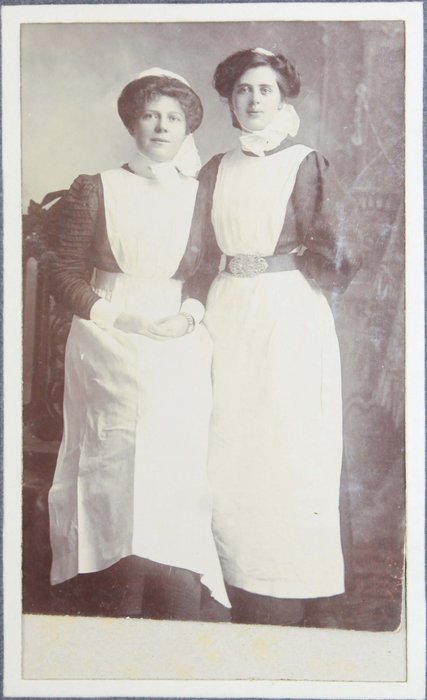

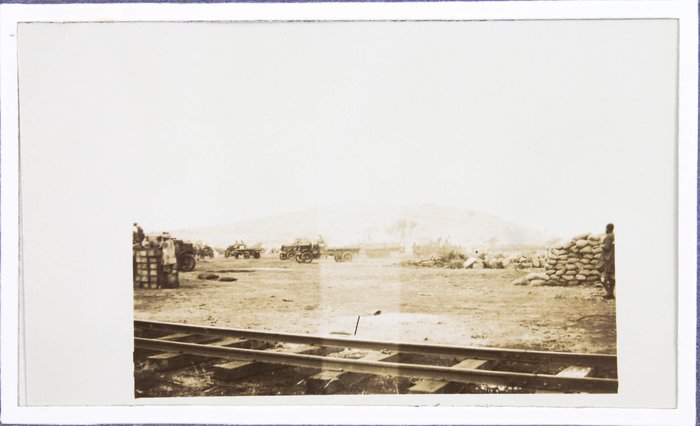
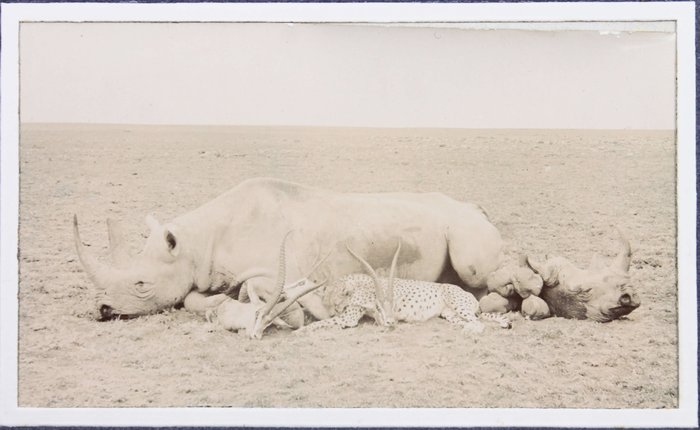
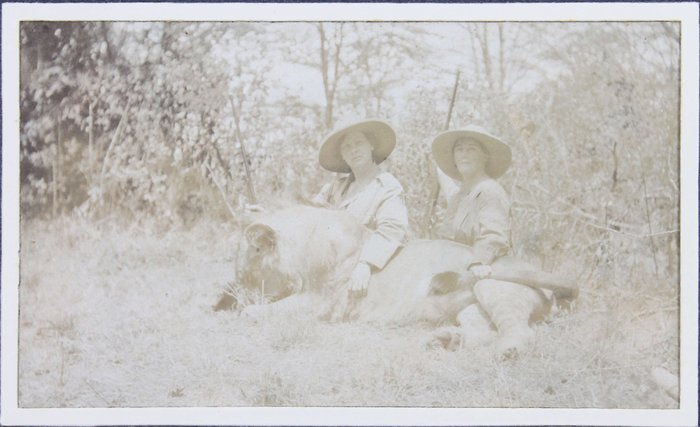
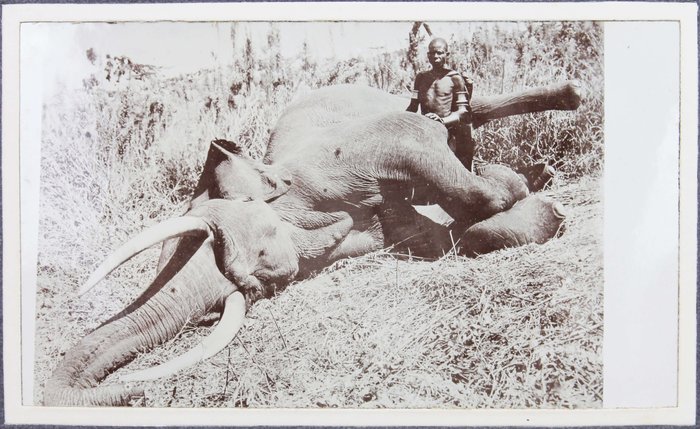
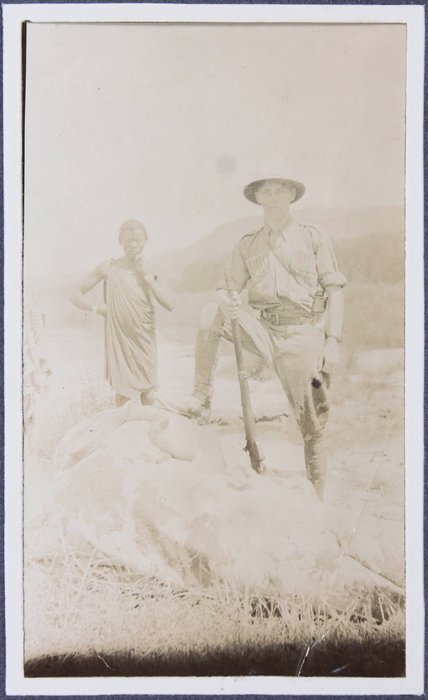
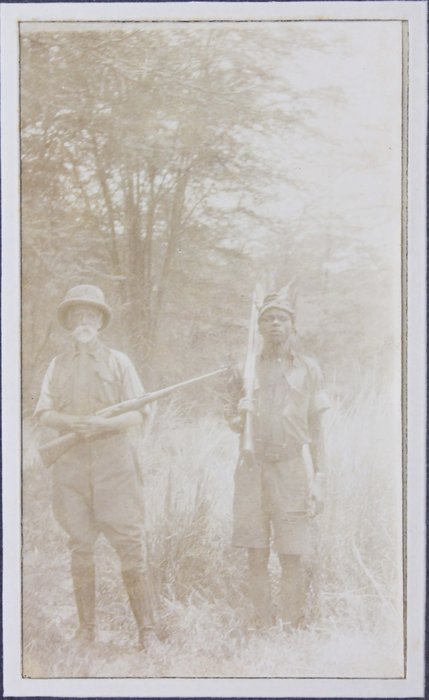
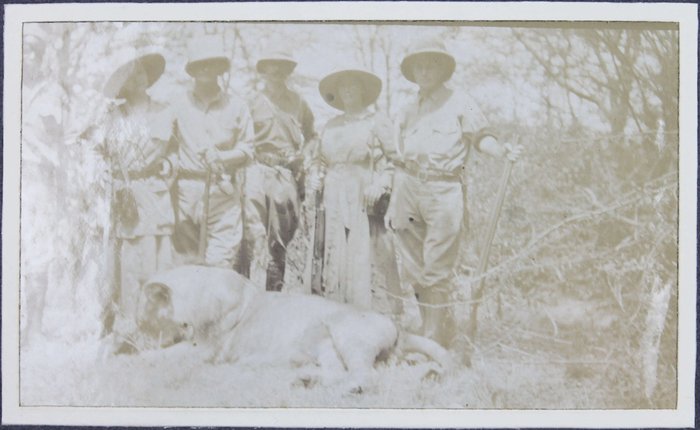

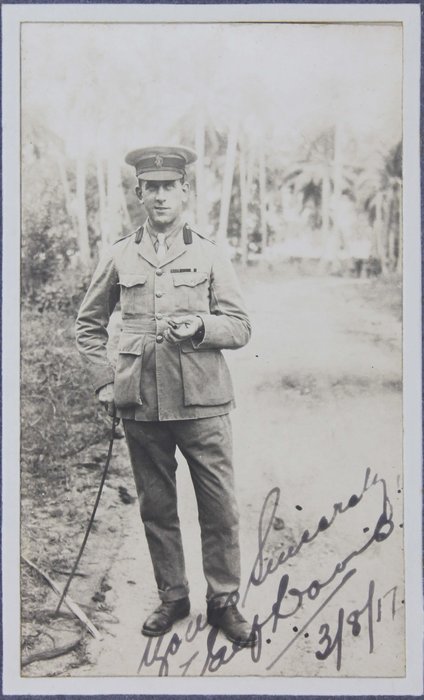
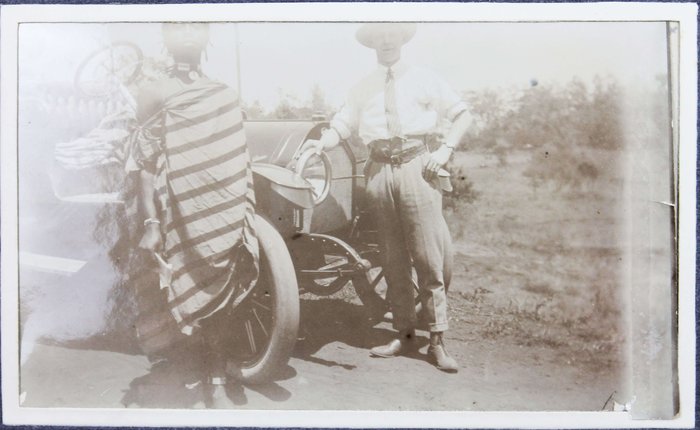
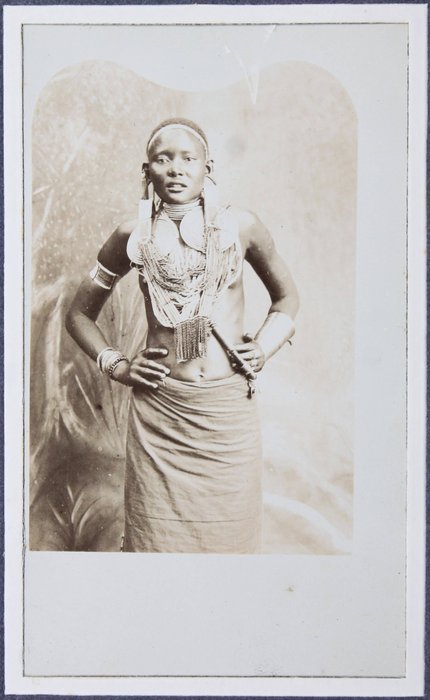
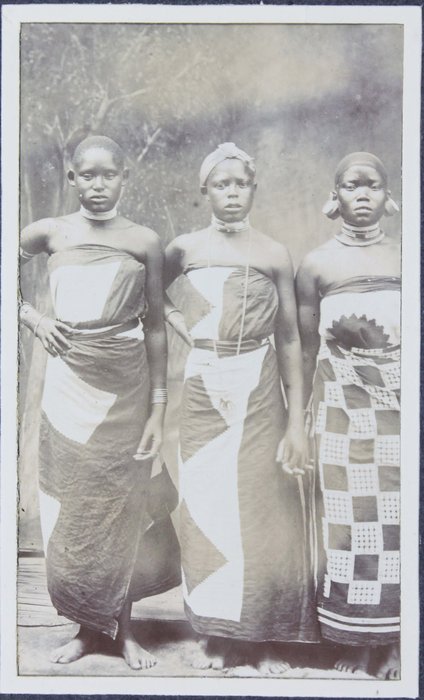
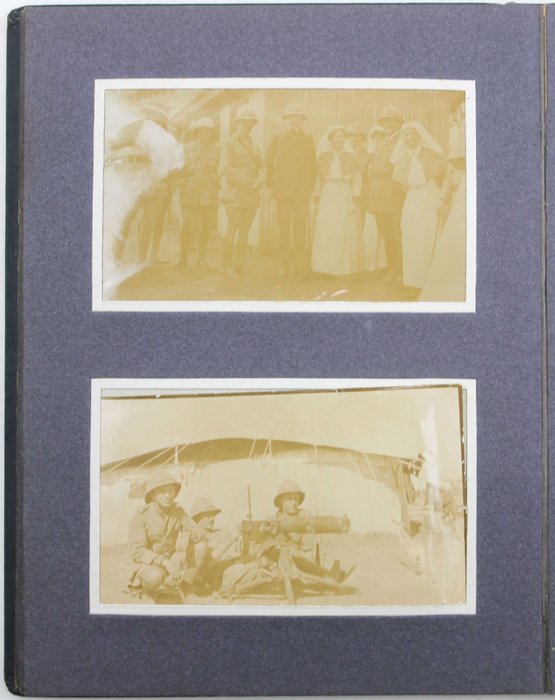
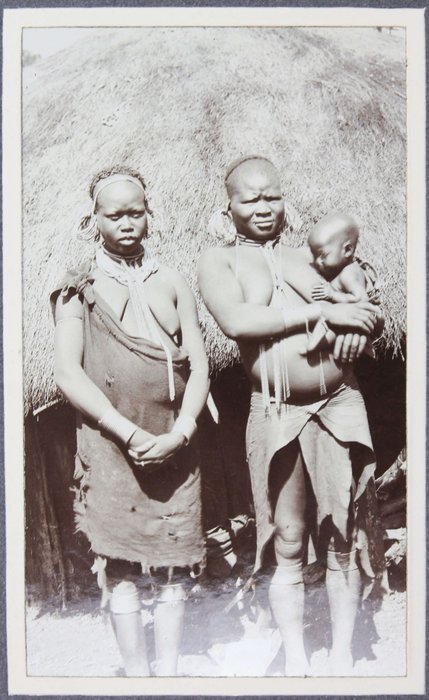
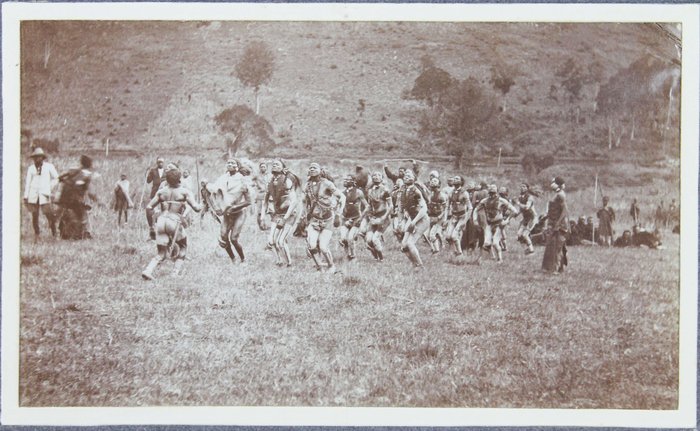
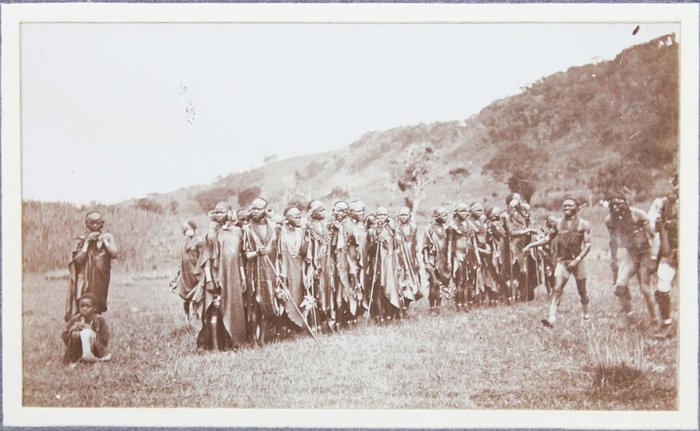
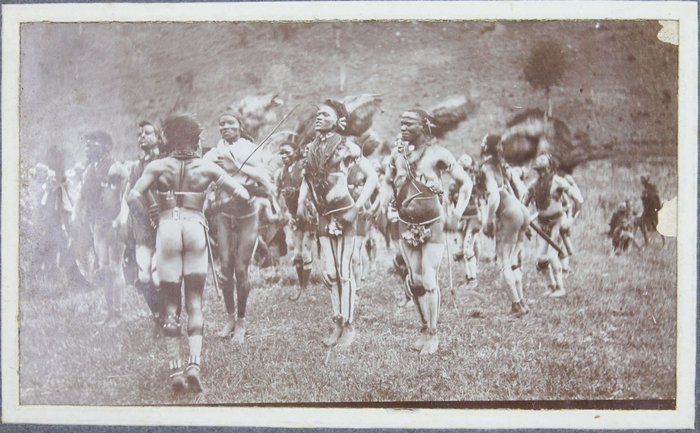
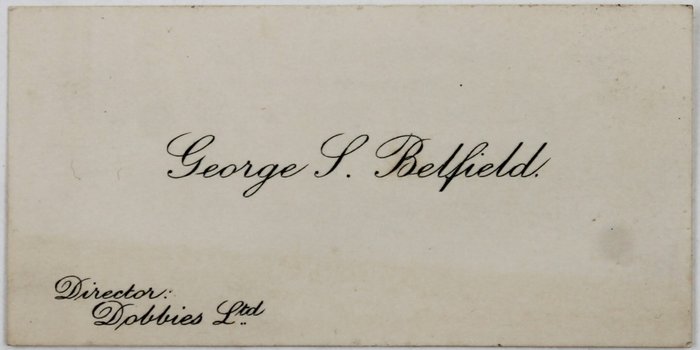

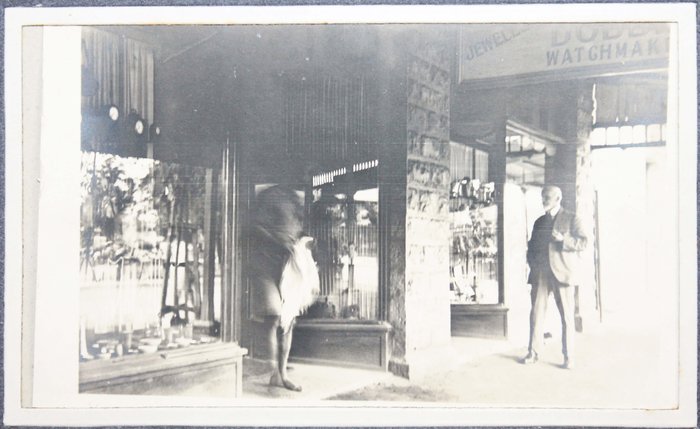
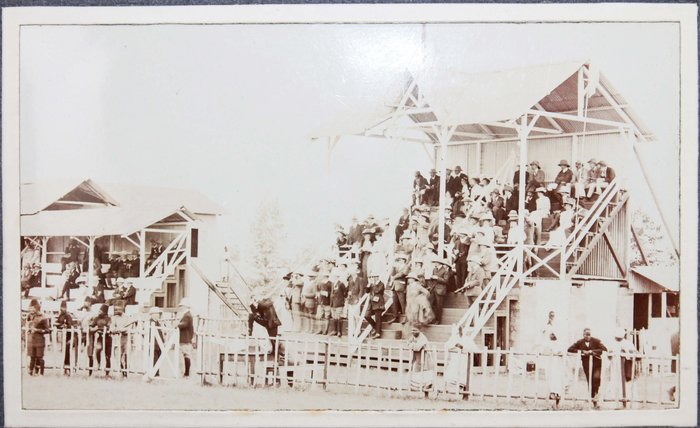
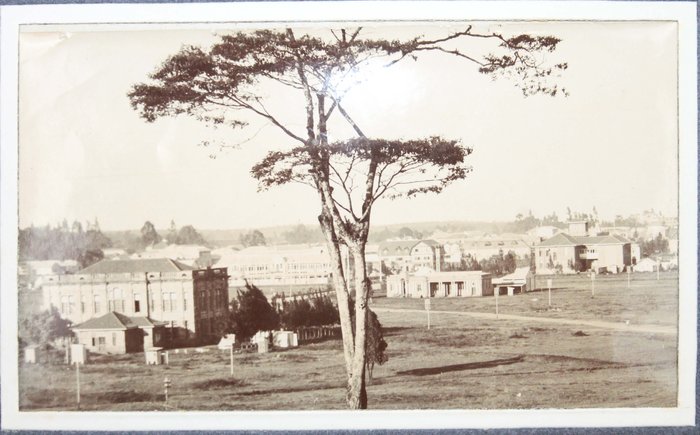
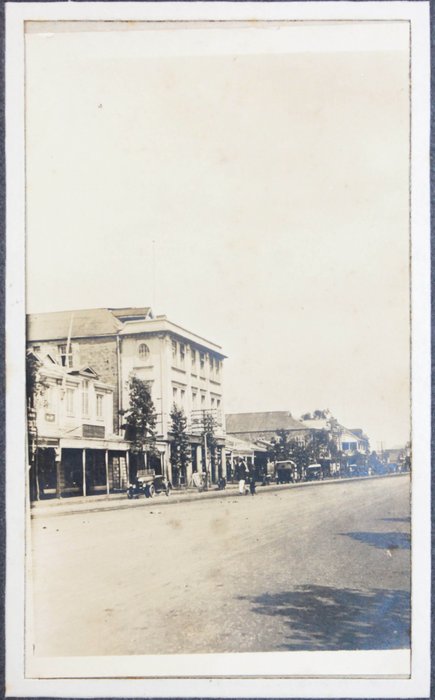
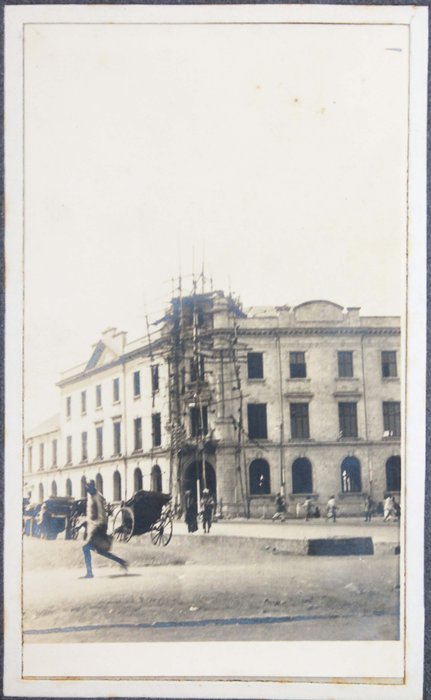
#PE47
Ca. 1910s
Quarto album (ca. 26x19,5 cm). 12 card stock leaves. With 48 original gelatin silver photographs, including about 4 printed and 2 real photo postcards, each ca. 13,7x8,5 cm (5 ½ x 3 ¼ x in); with a business card of “George S. Belfield. Director: Dobbies LTD” signed on the verso: “Kenya… Trust you will like it with every good wish for Christmas and 1931.” At least 1 photo with period ink caption (in English) on the verso, two real photo postcards signed and dated. Period full-cloth album, with the gilt-tooled generic title and the shape in the form of the sun on the front board. Edges worn, several photos with tears at the edges and mild silvering, but overall a very good album with strong interesting photos.
Historically interesting collection of lively vernacular photographs illustrating the life of an affluent Scottish jewelry maker in Kenya, British East Africa, in the 1910s.
As follows from the album, the compiler was George Sinclair Belfield (ca. 1860-1931), one of the most experienced watchmakers and jewelers in East Africa. Born in Prestonpans, Scotland, he was trained by the renowned Edinburgh firm Marshall & Co., jewelers to Queen Victoria and King Edward VII. Belfield arrived in British East Africa in 1905, during a period of rapid colonial expansion and development. He became a business partner of Ewart Dobbie, who had founded Dobbies Ltd. in Nairobi - a premier retailer of Swiss watches including Rolex and Tudor. Upon Dobbie’s death in 1926, Belfield took over the firm, which existed until 1931.
The collection features forty-eight vibrant views of Kenya, with most photographs likely showing colonial Nairobi, where the compiler lived. Seven identified, well-executed photos depict exterior of Dobbie’s jewelry shop (no other photos of the company building were found throughout our internet research), Muthaiga golf club, government road with numerous cars and contemporary buildings, and general view of the city.
Especially interesting are about ten candid urban scenes, showing the compiler and his companions during a safari trip, proudly posing with rifles and native guides by the game (rhinos, lions, elephants, zebras, etc.).
There are also about eight lively vernacular individual and group portraits, likely depicting members of the Kikuyu community. Studio photographs show men and women adorned with neck rings, arm bangles, and head wraps, posed formally, while other images capture half-clothed African men during traditional dance rituals.
The rest of the photos, including real and printed photo postcards, mostly document native huts in Nairobi, the Manor Hotel in Mombasa, spectators at a sporting event, a railway track with military sandbags, scenes from a military event, and the compiler with his companions posing at a bathing spot, alongside local missionaries, etc.
Overall, historically interesting collection of photographs documenting Kenya in the 1910s.

